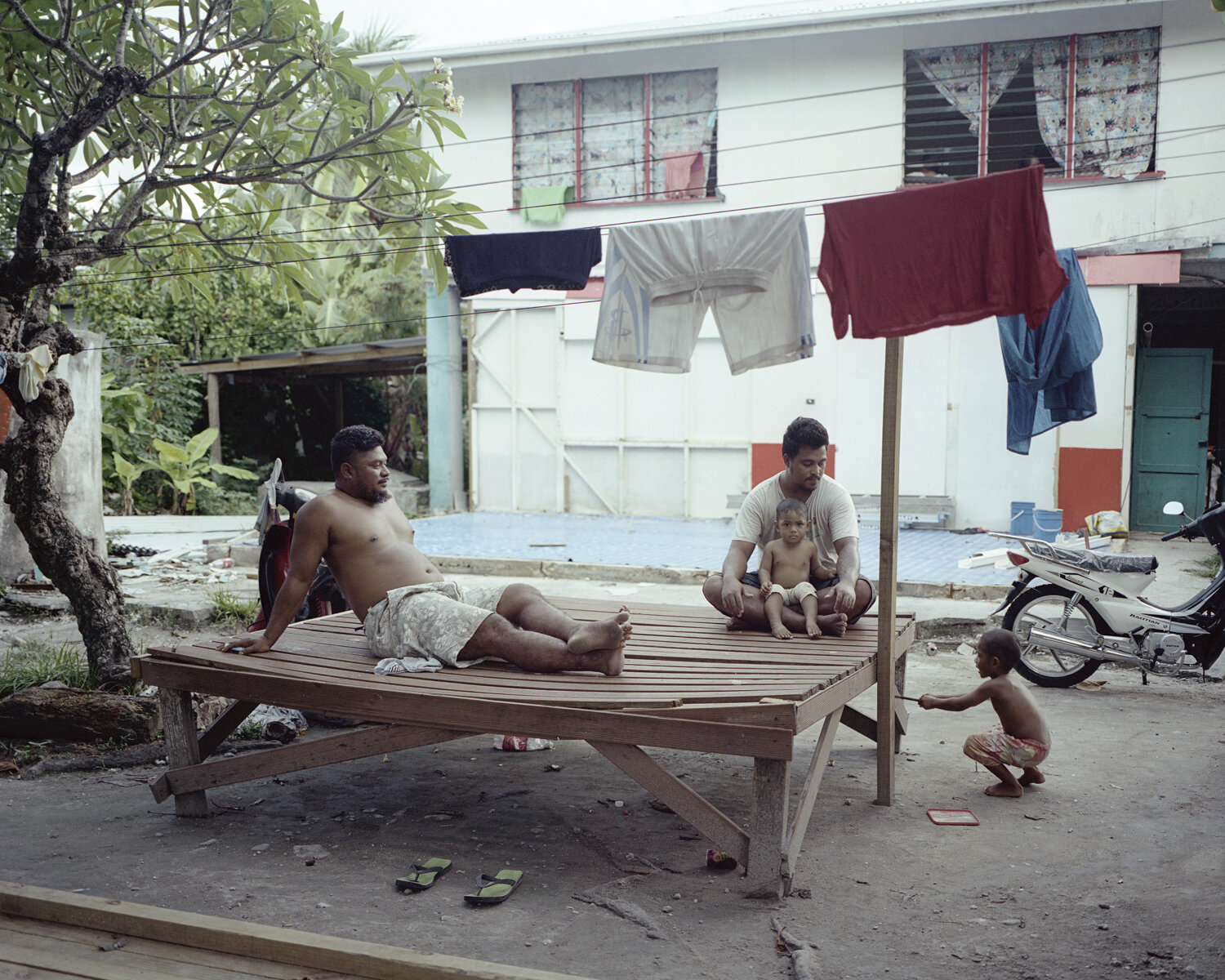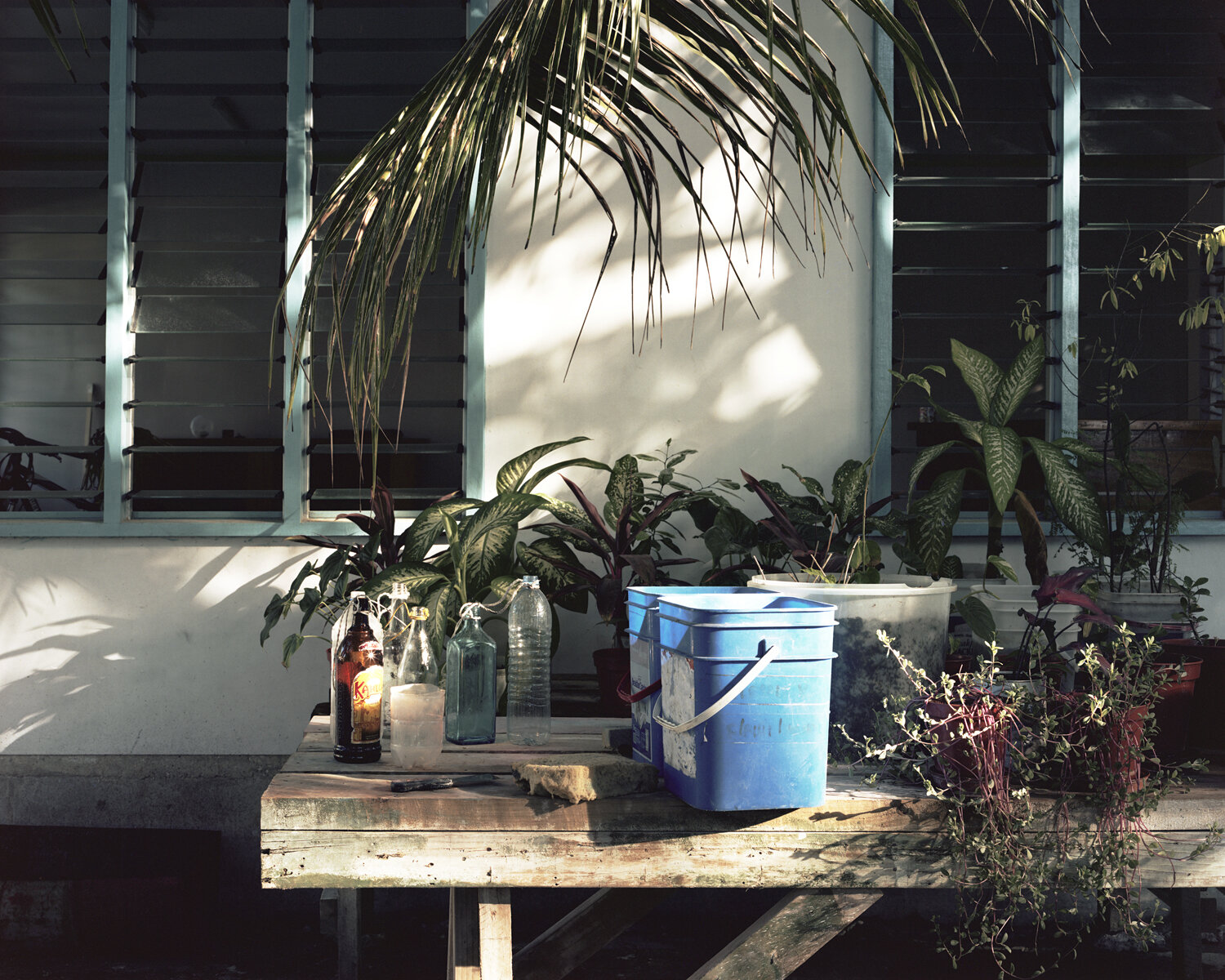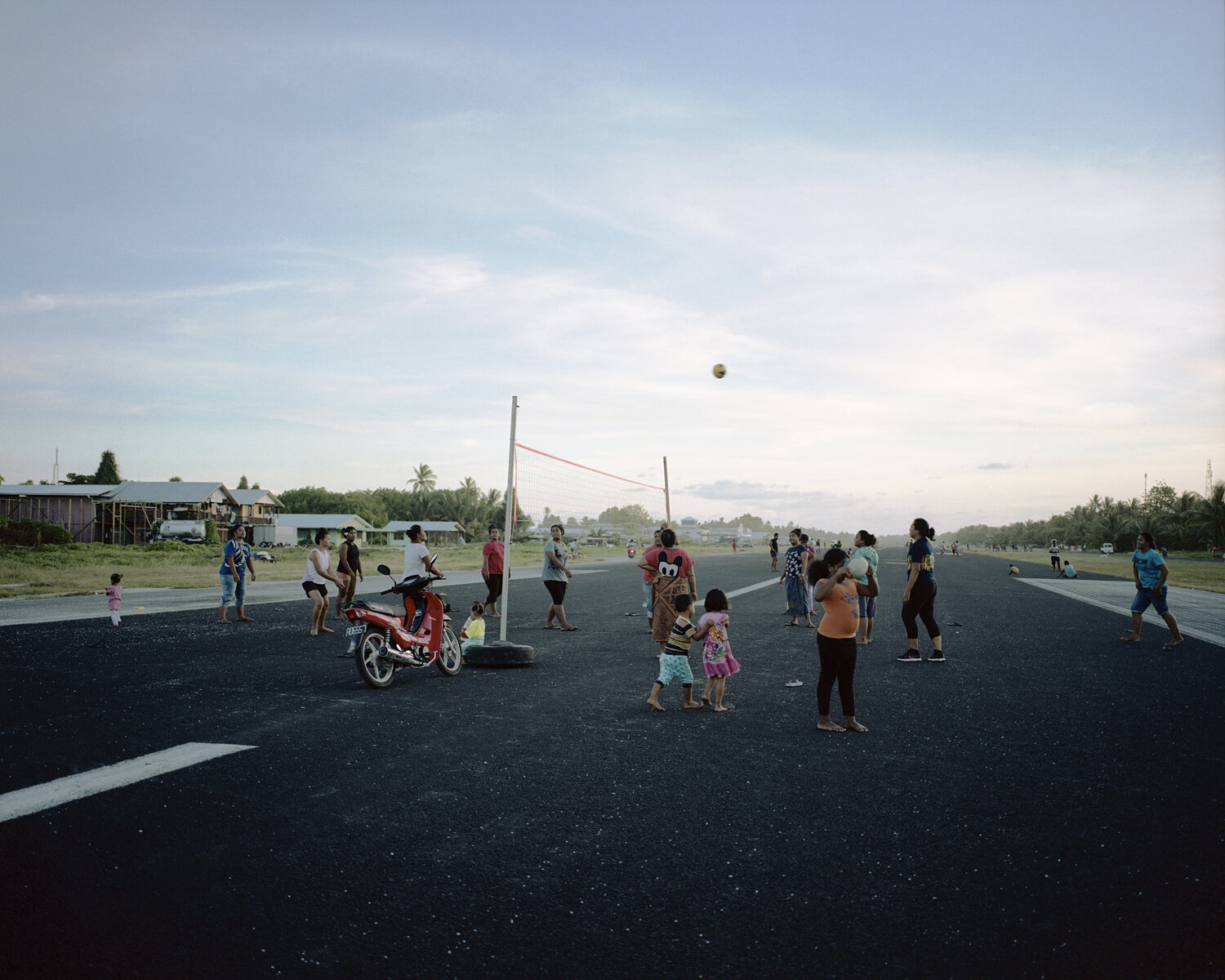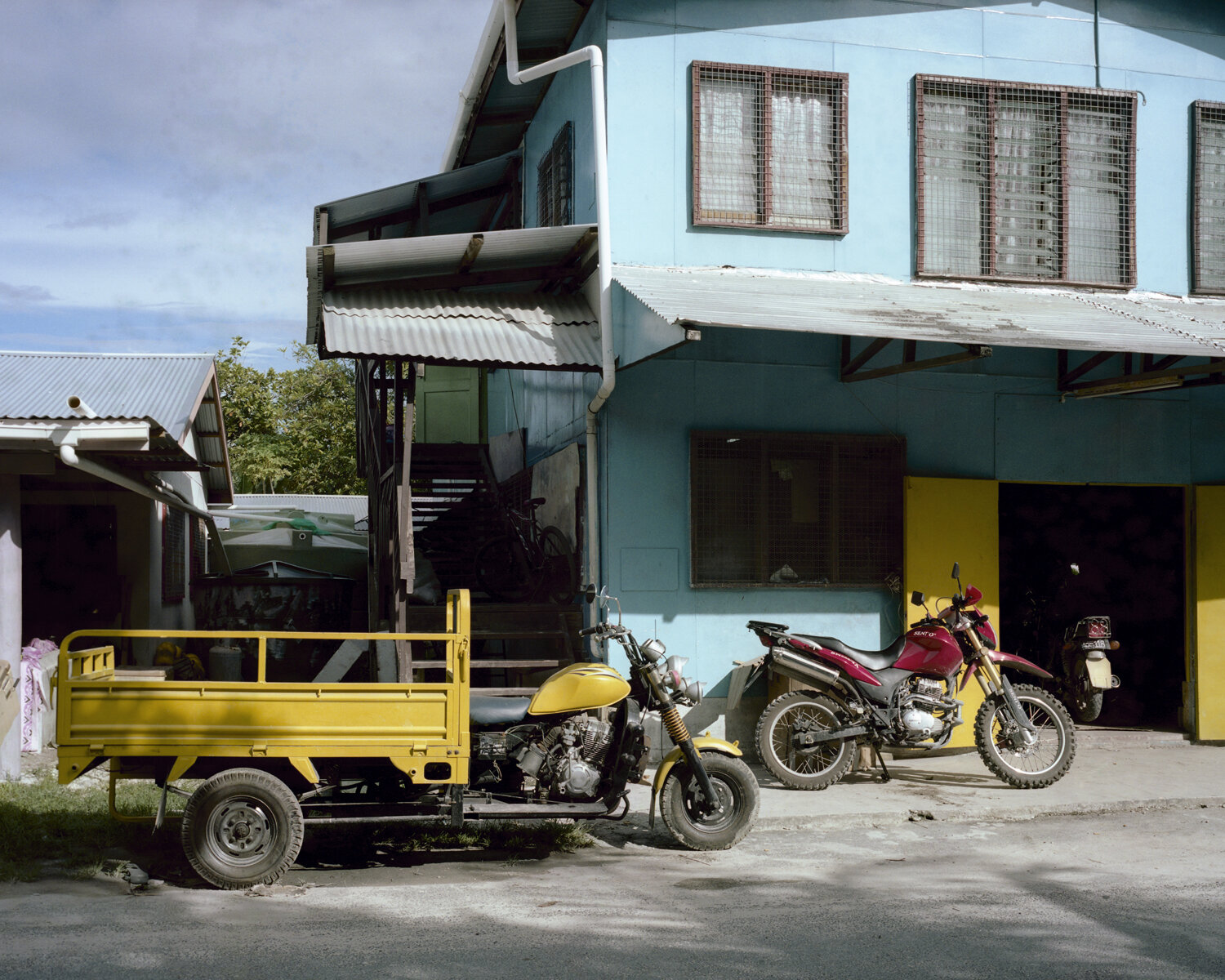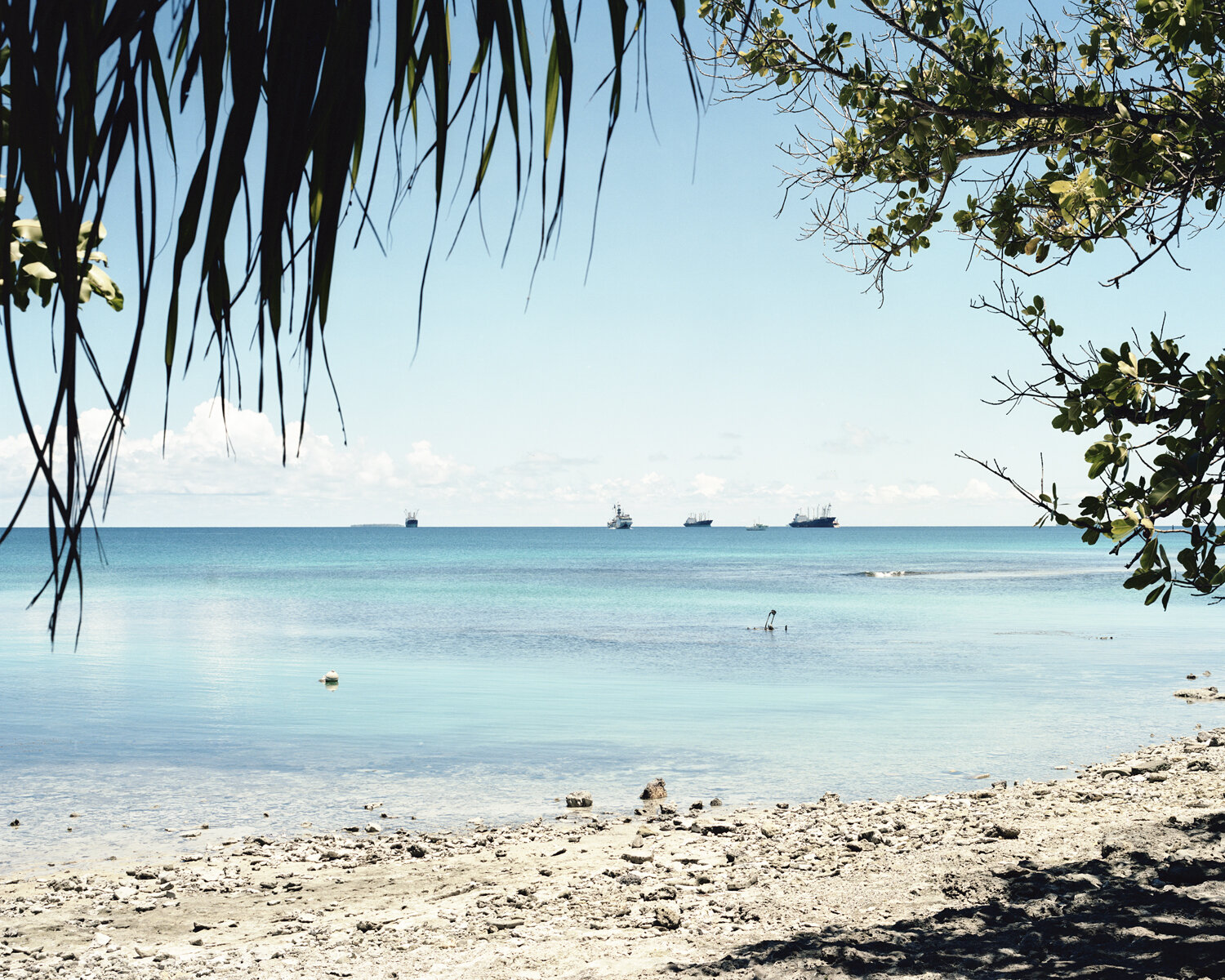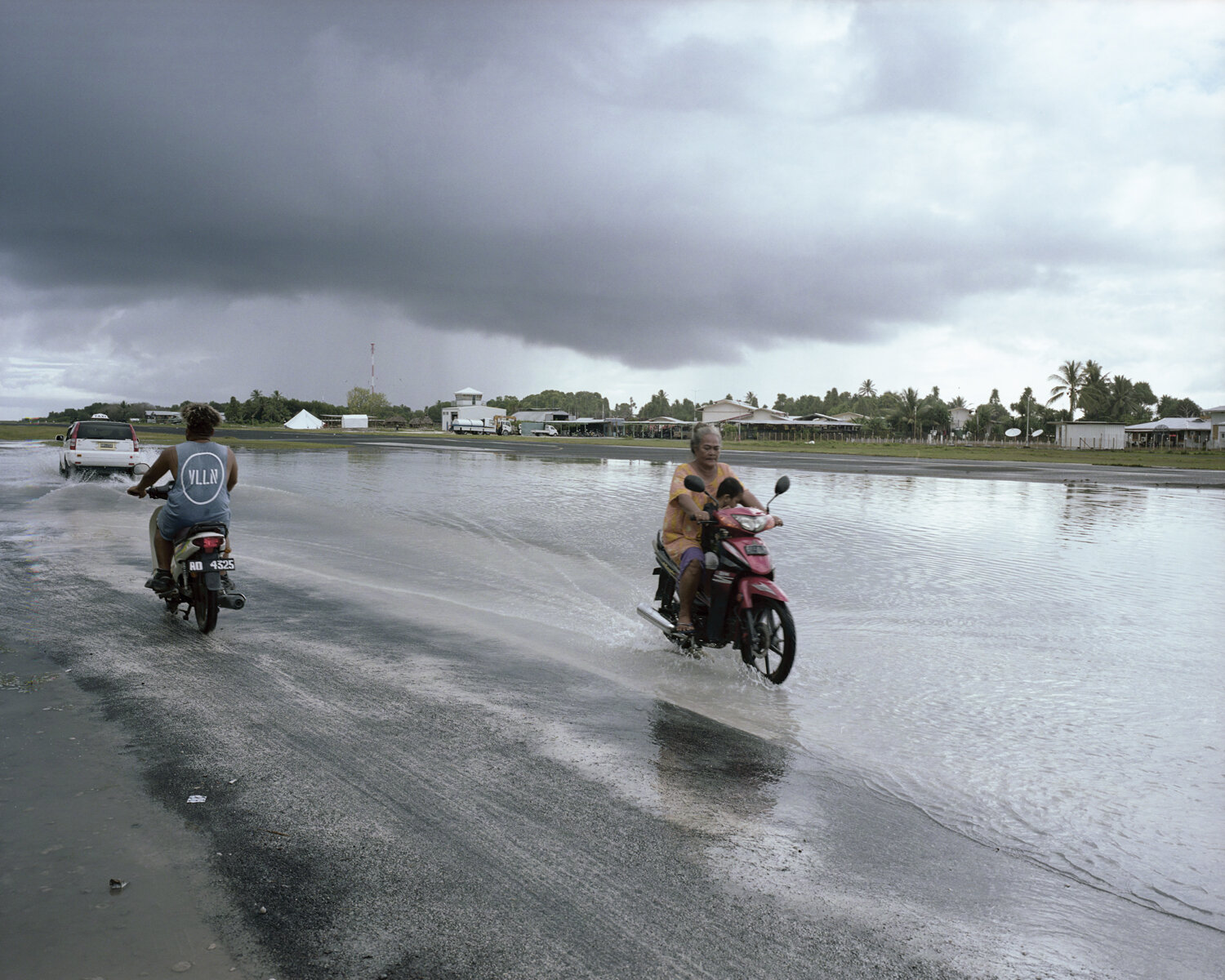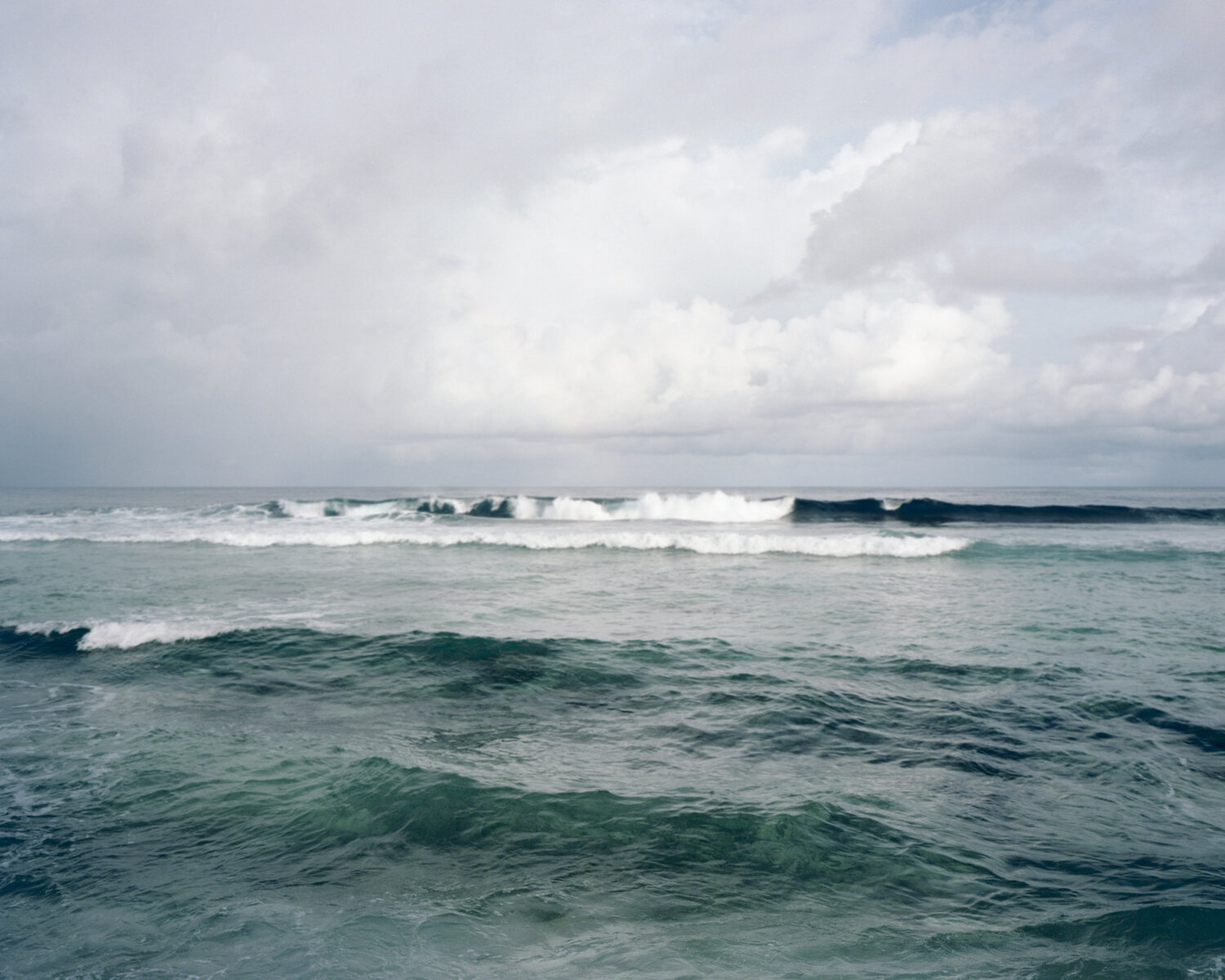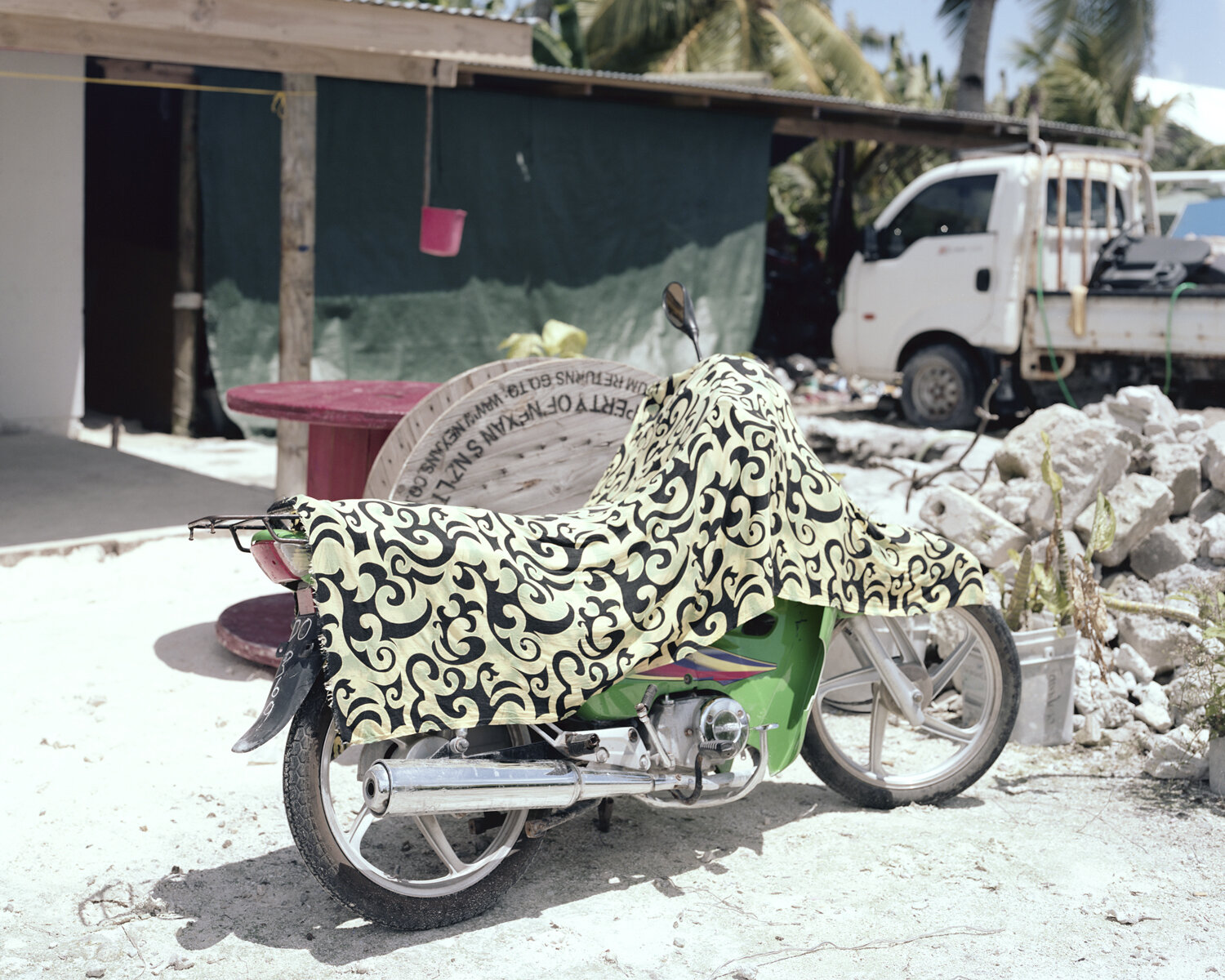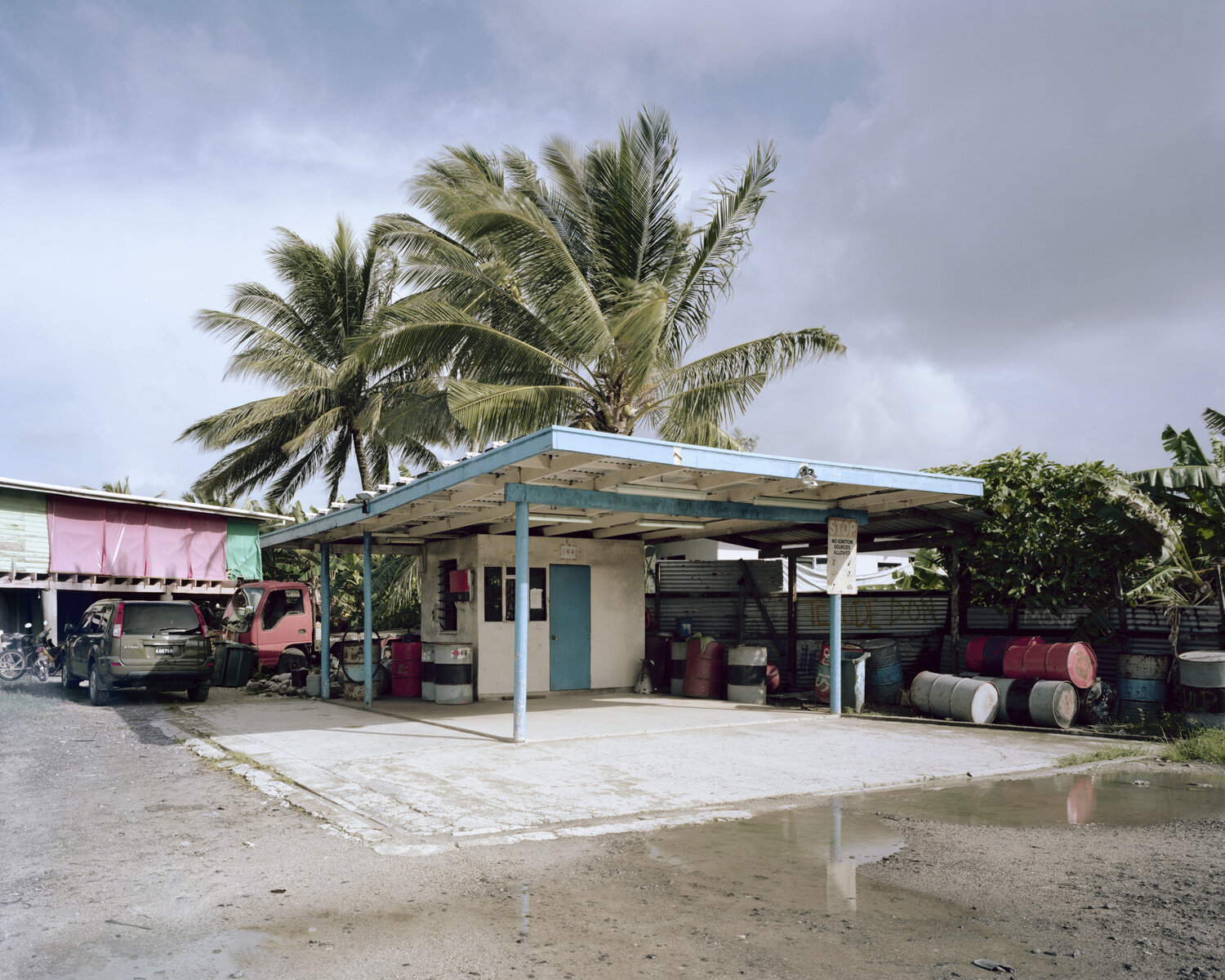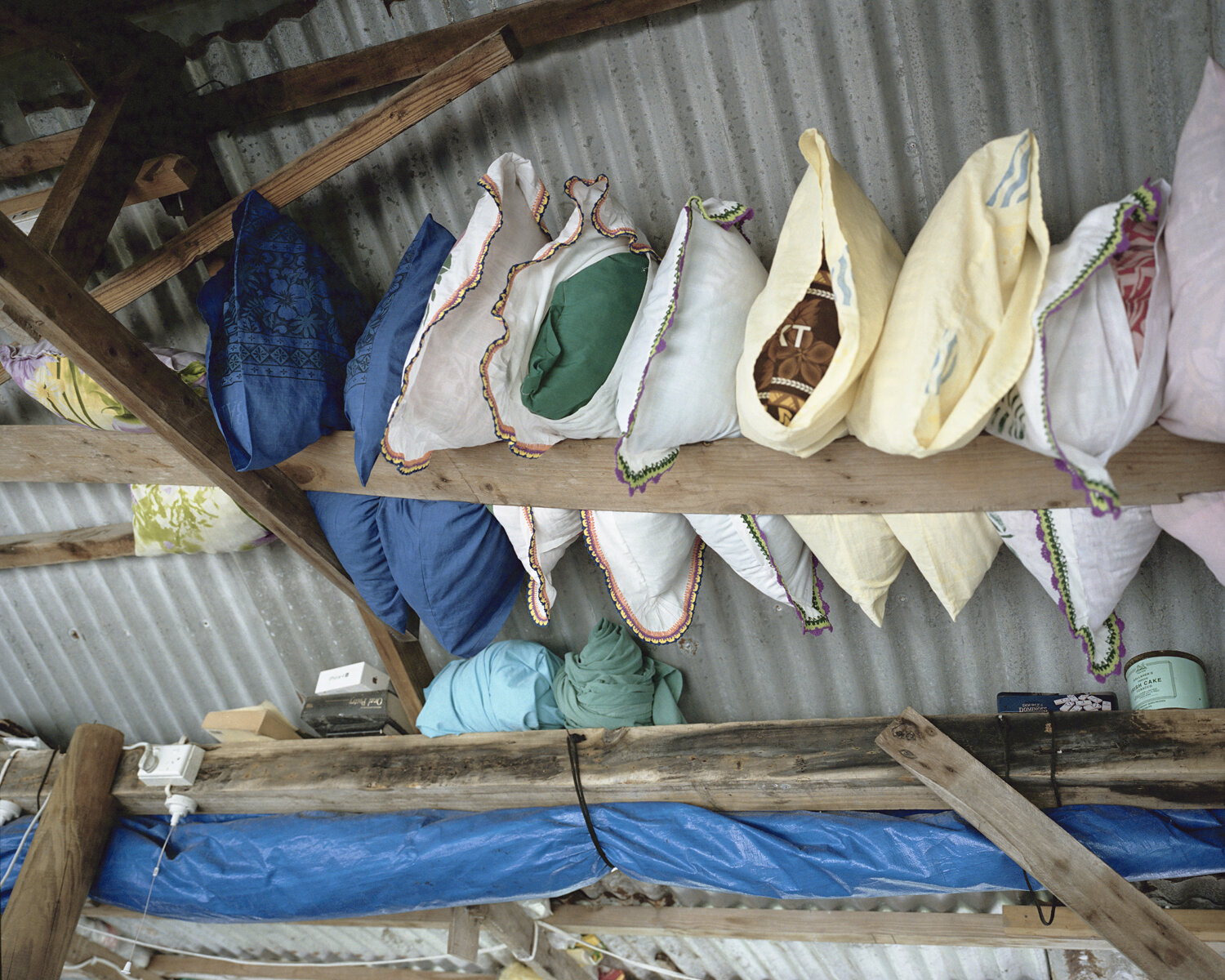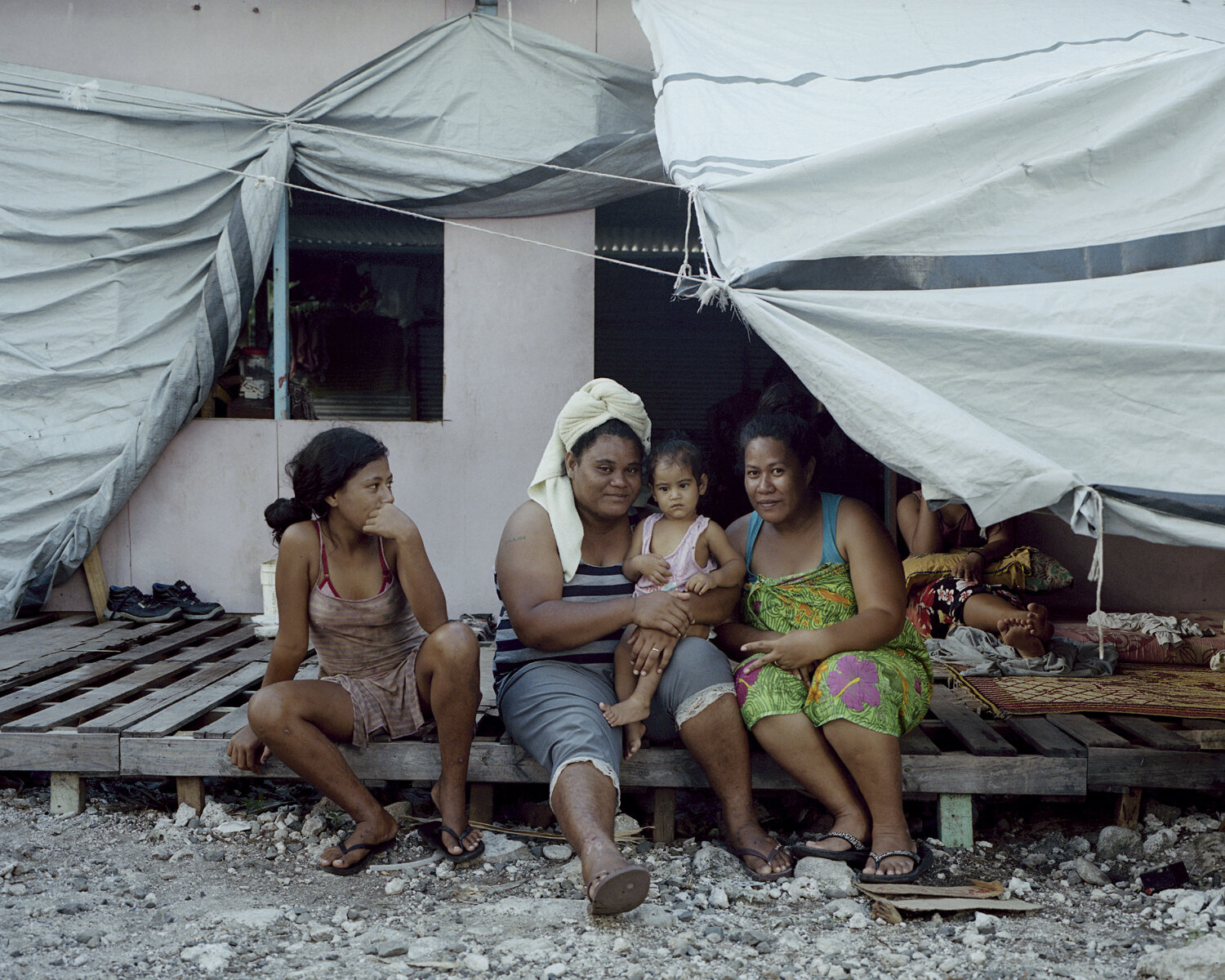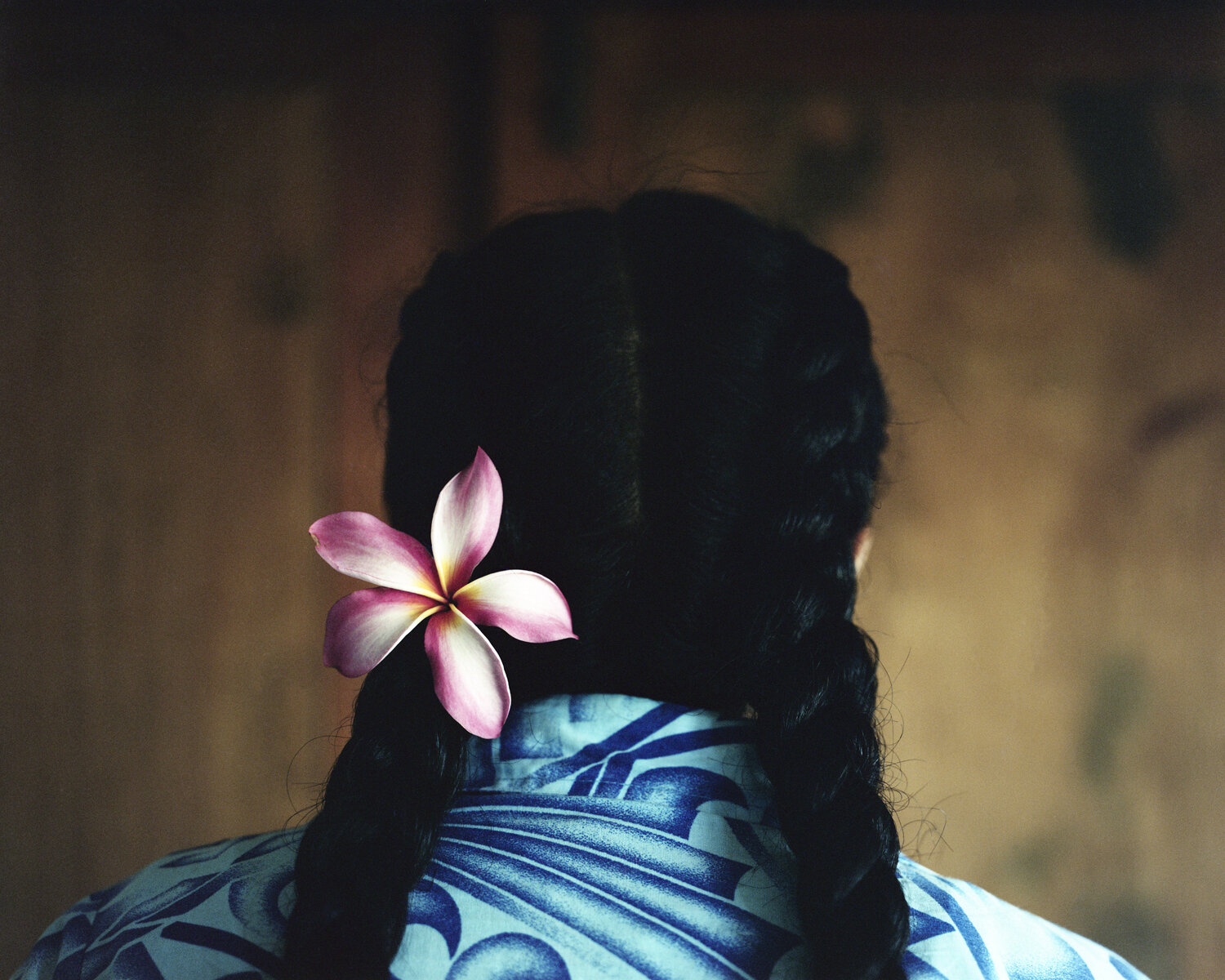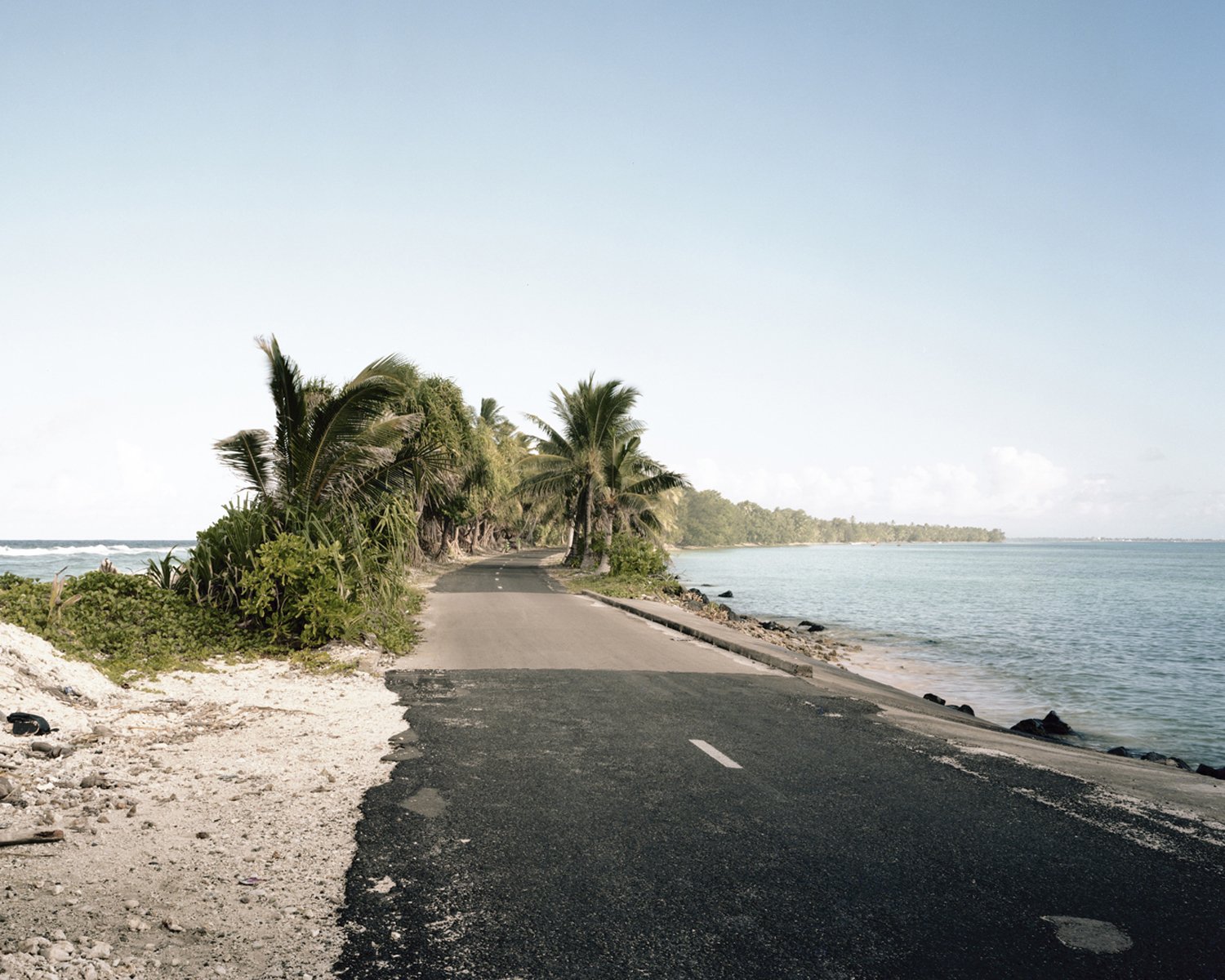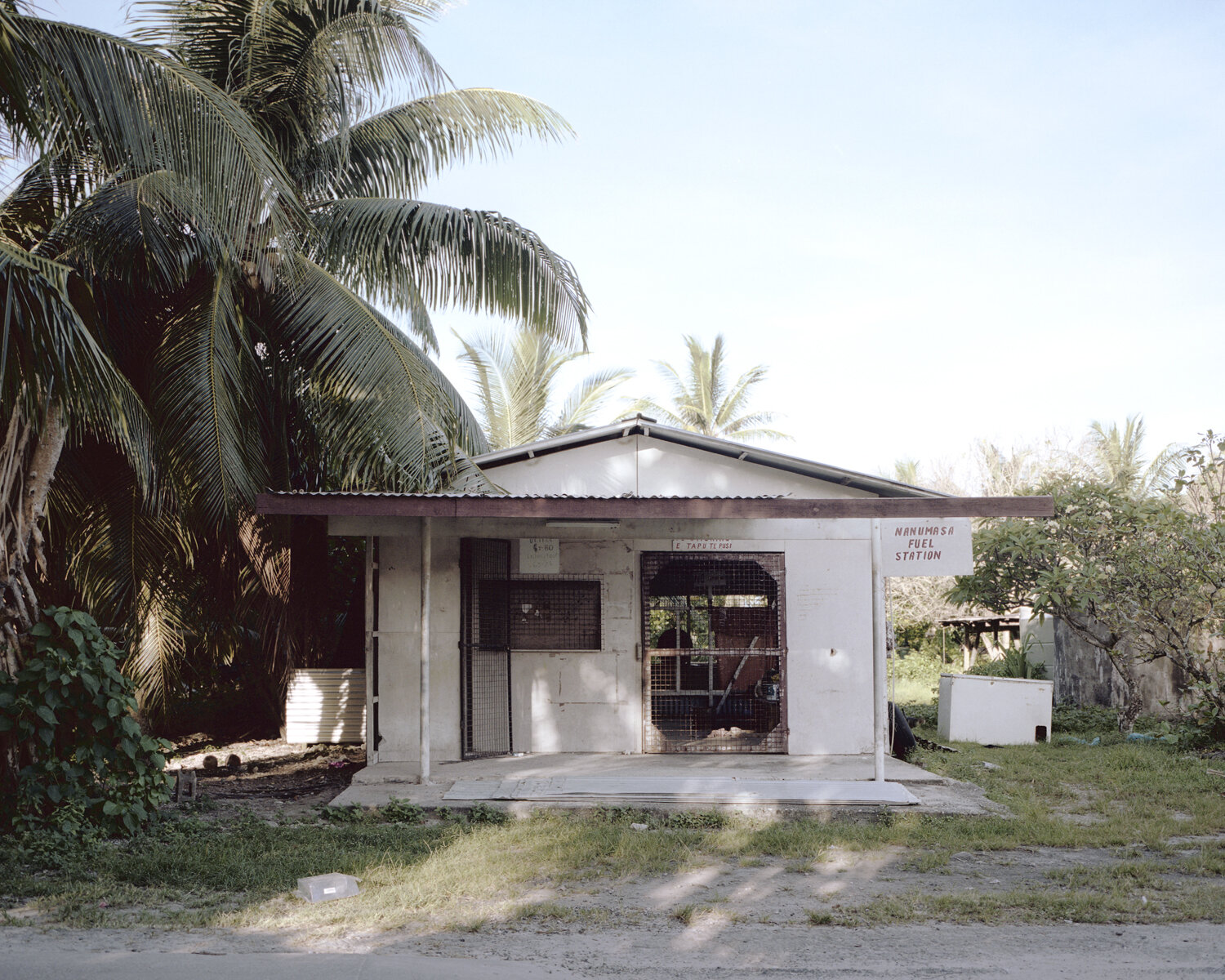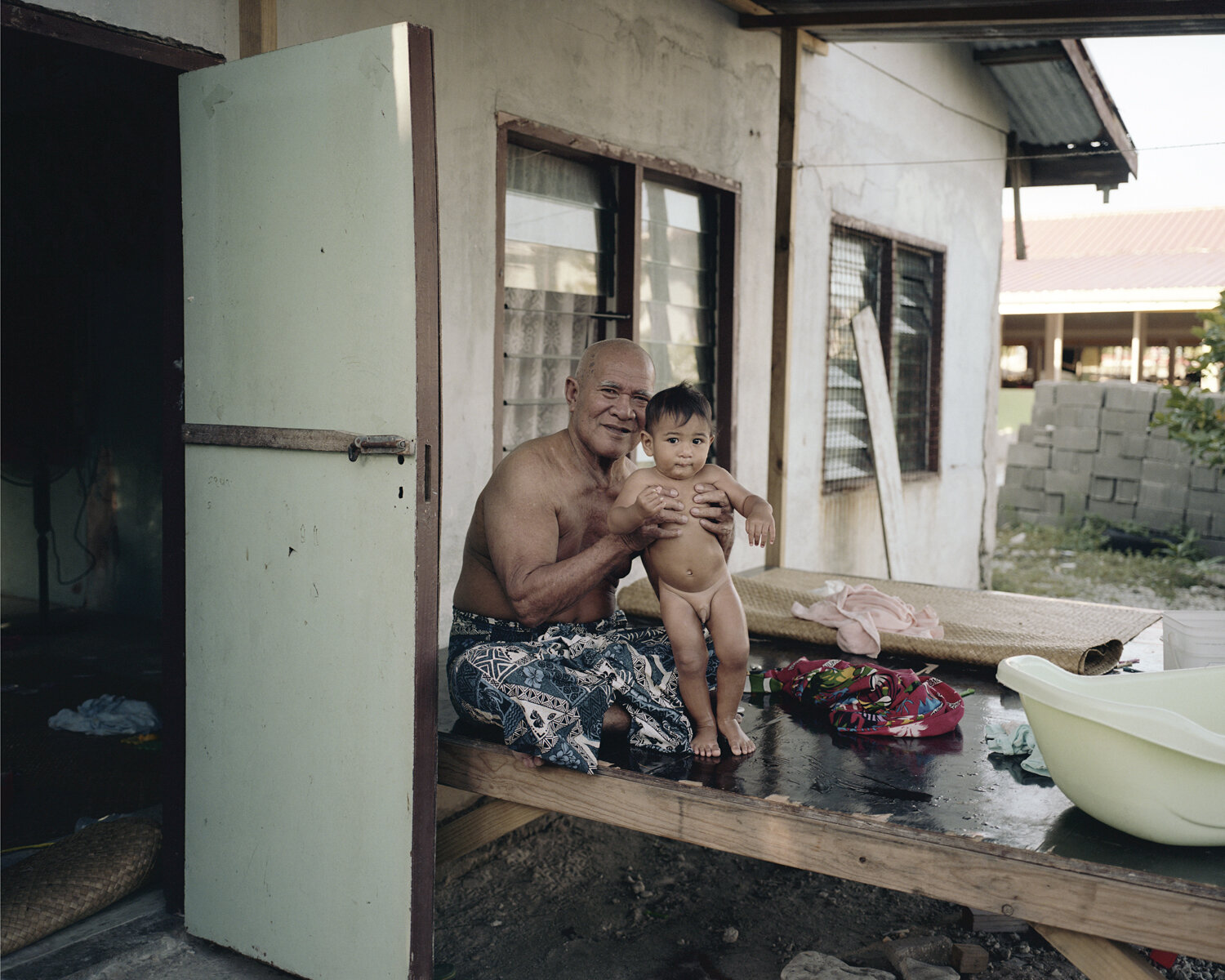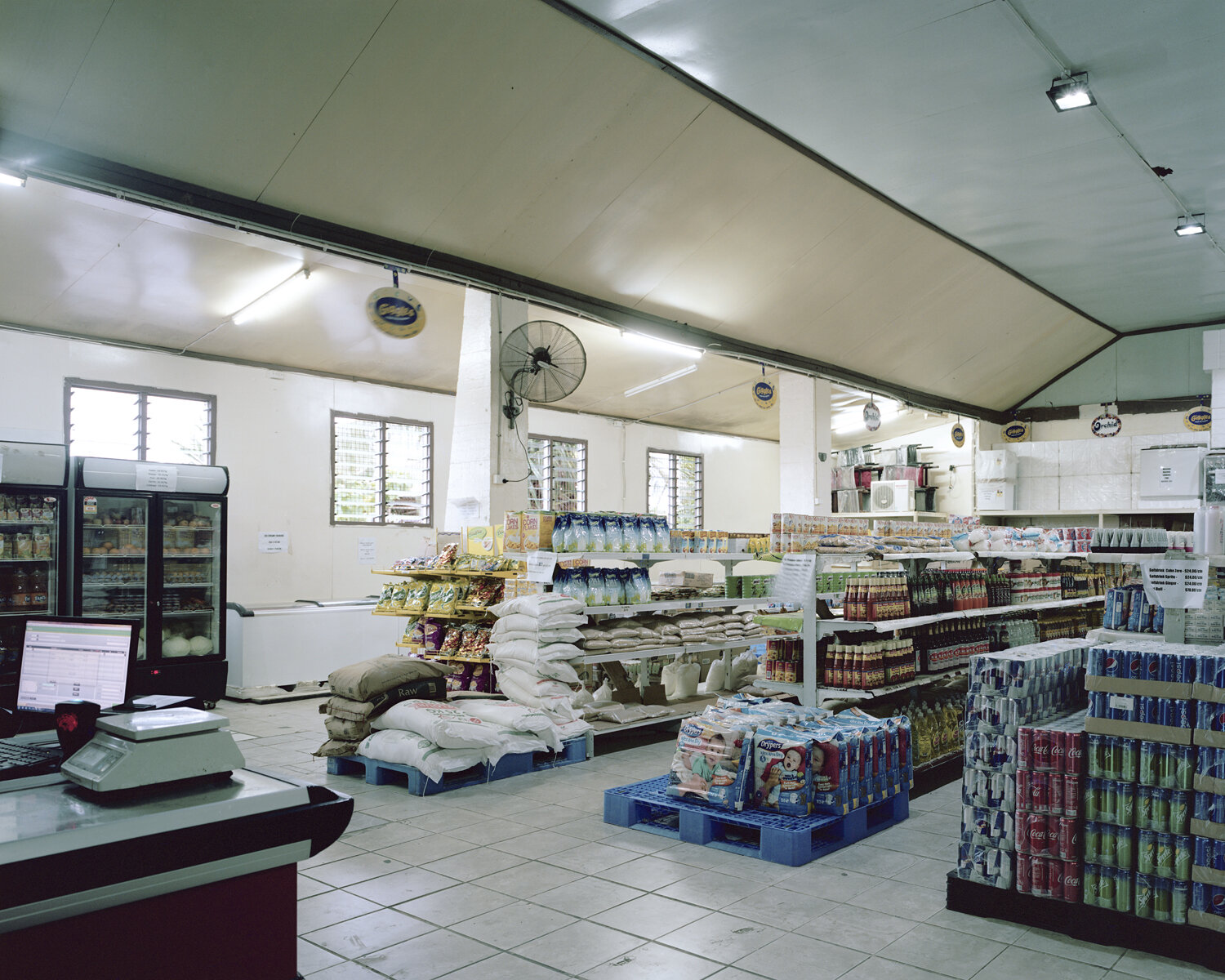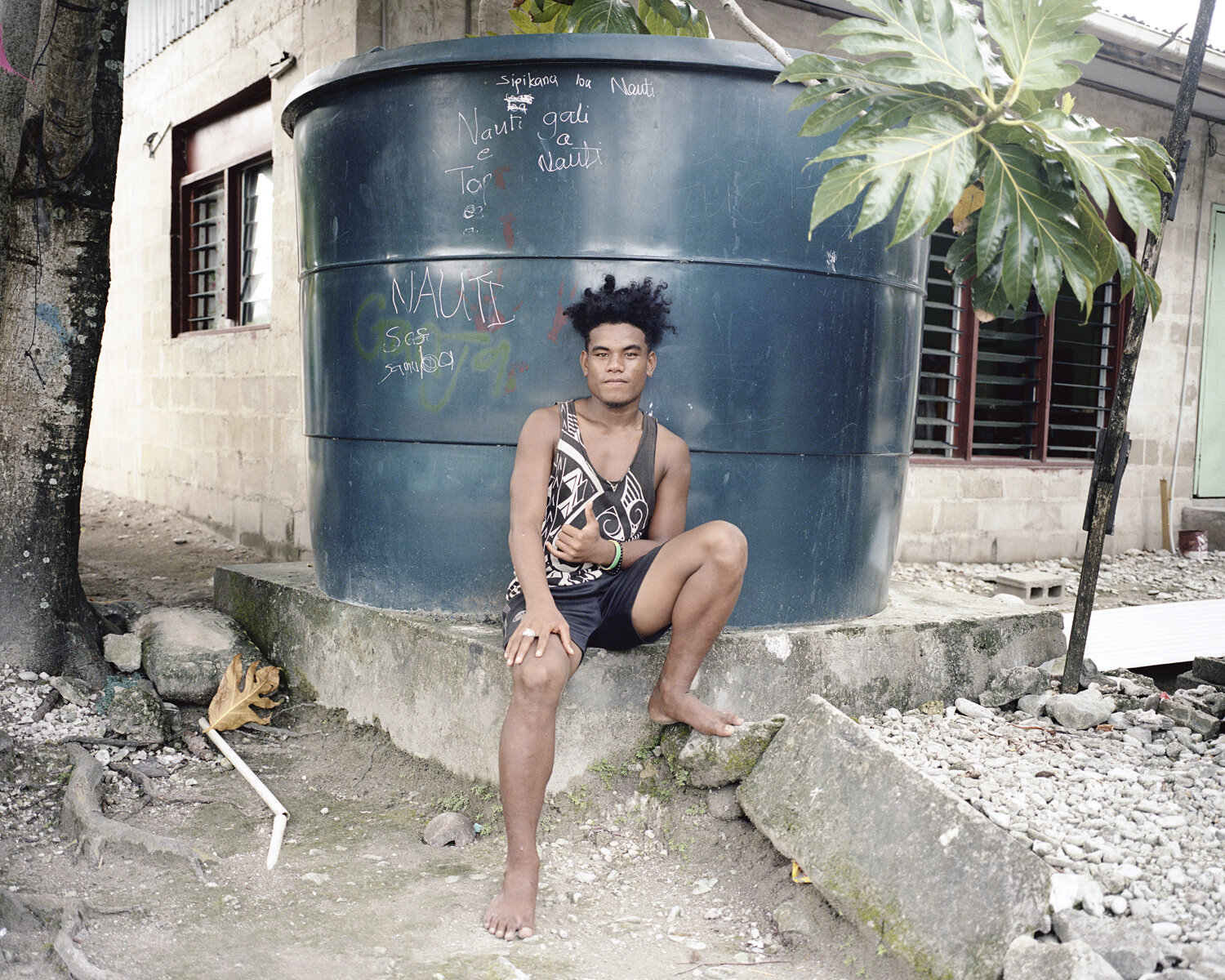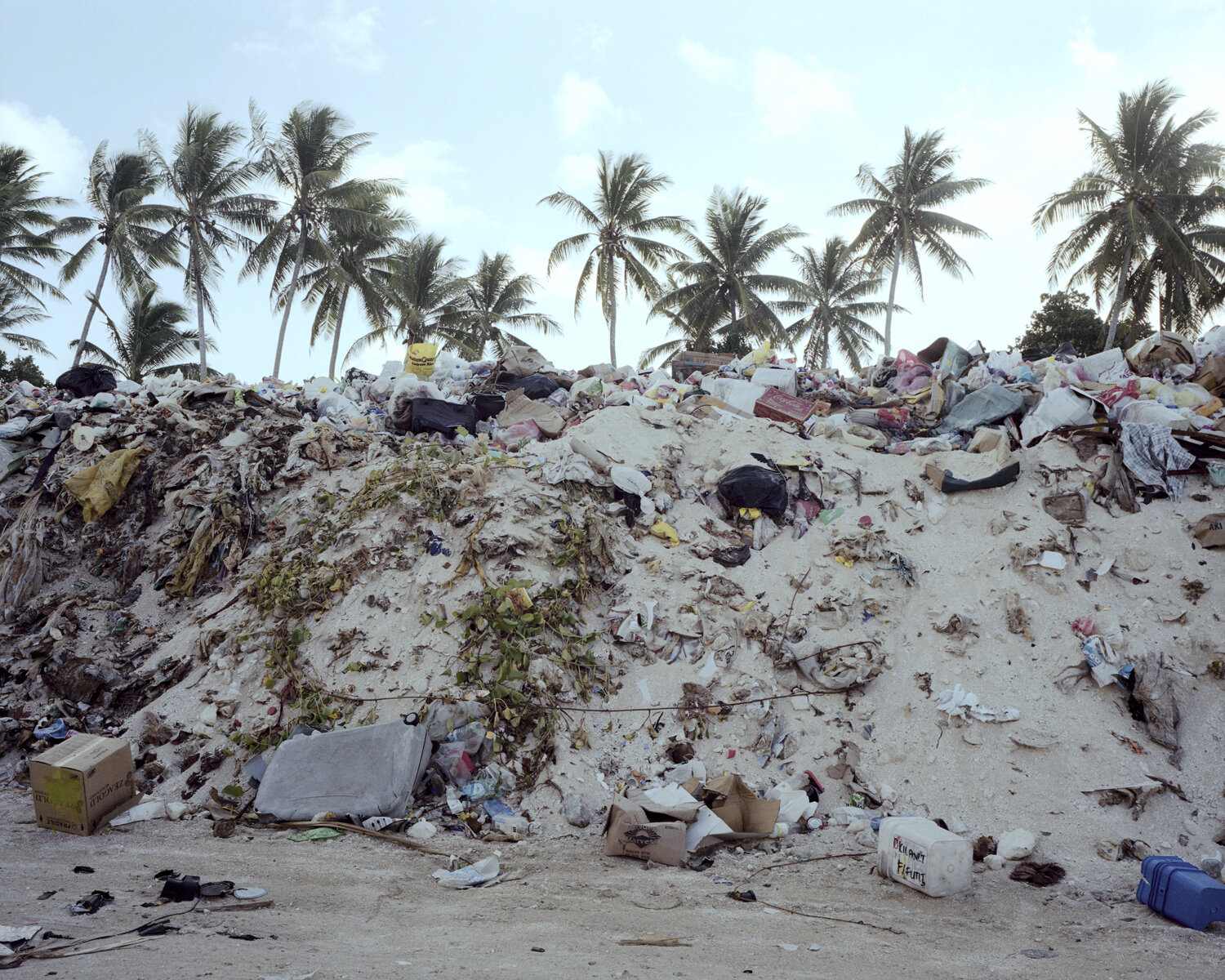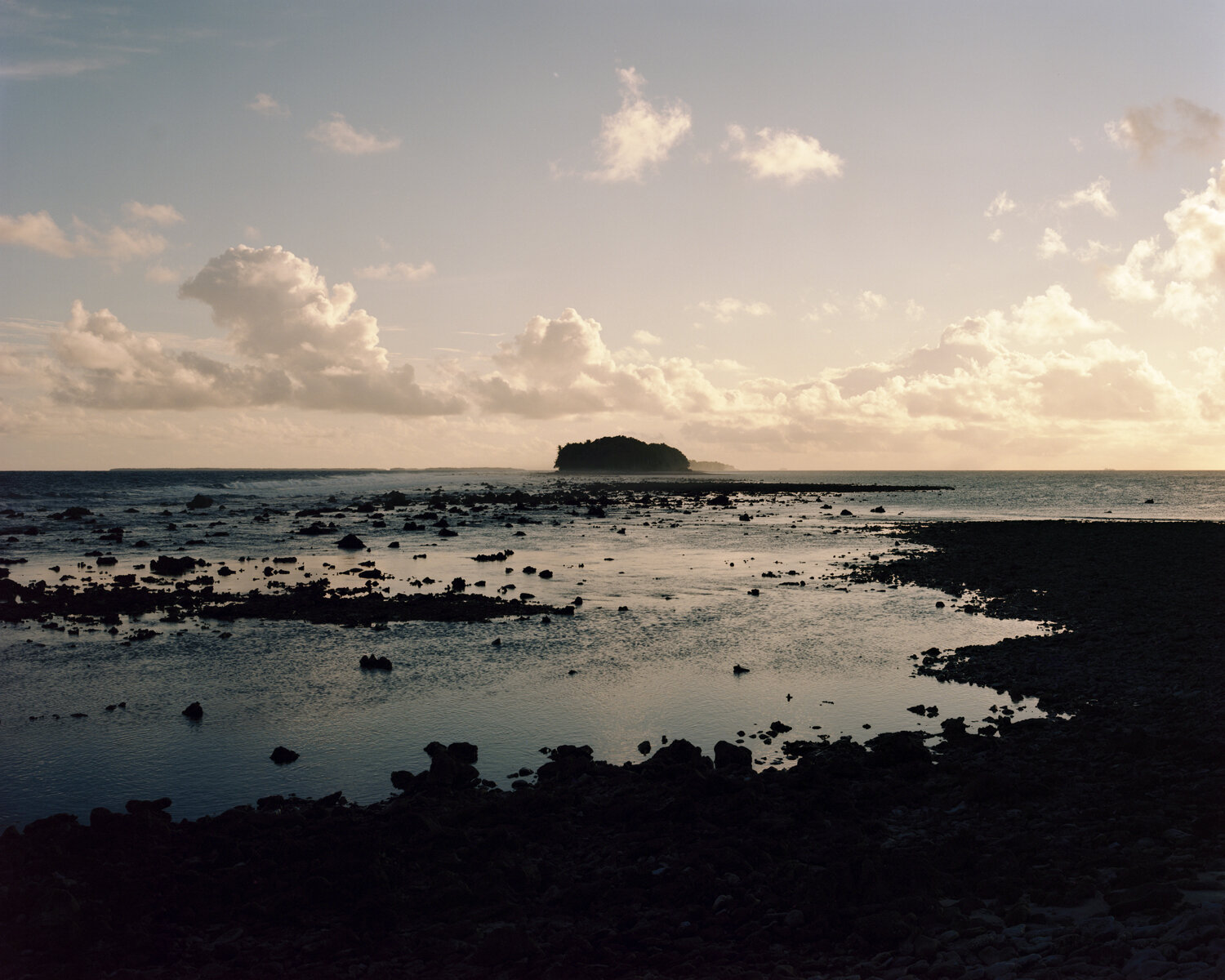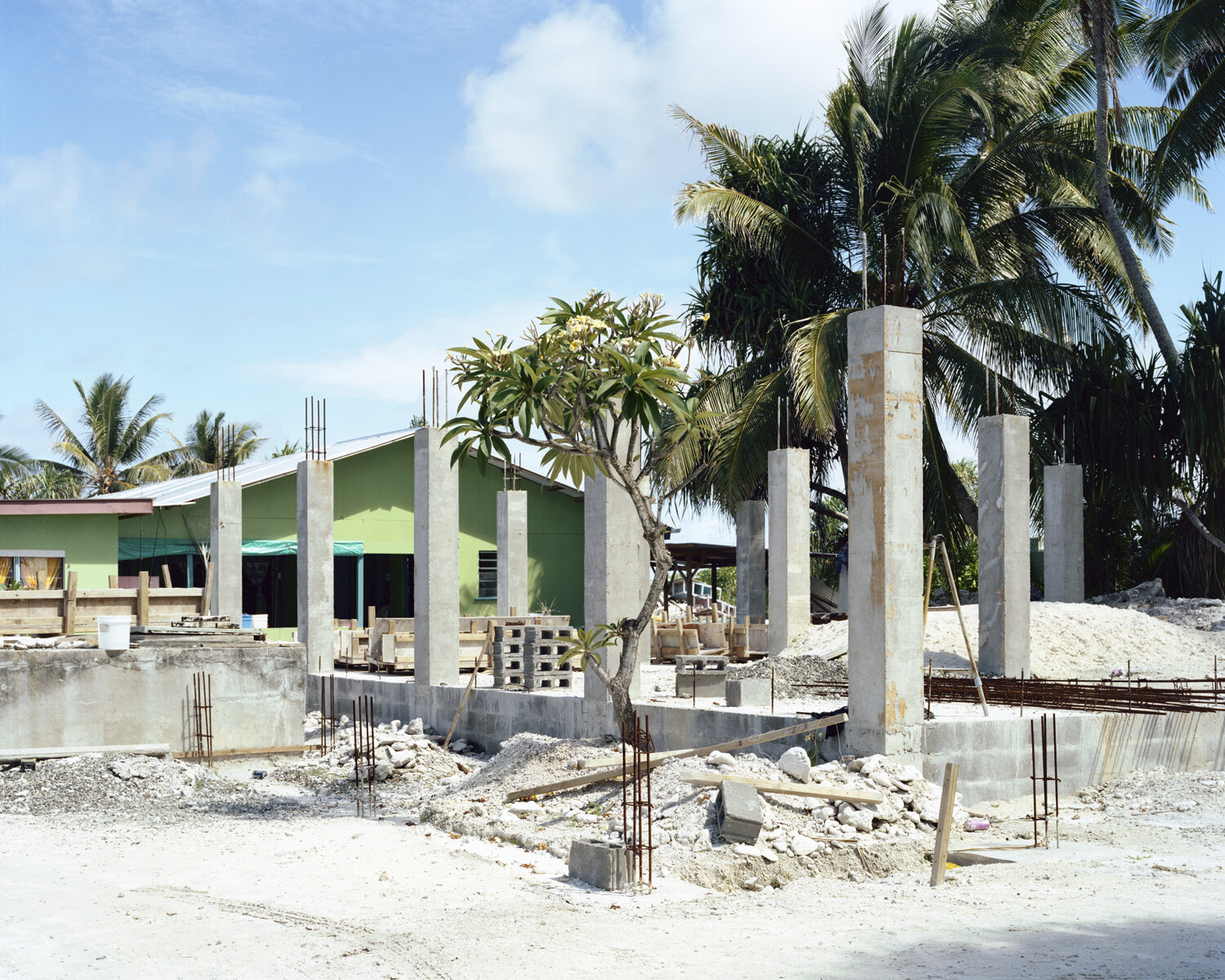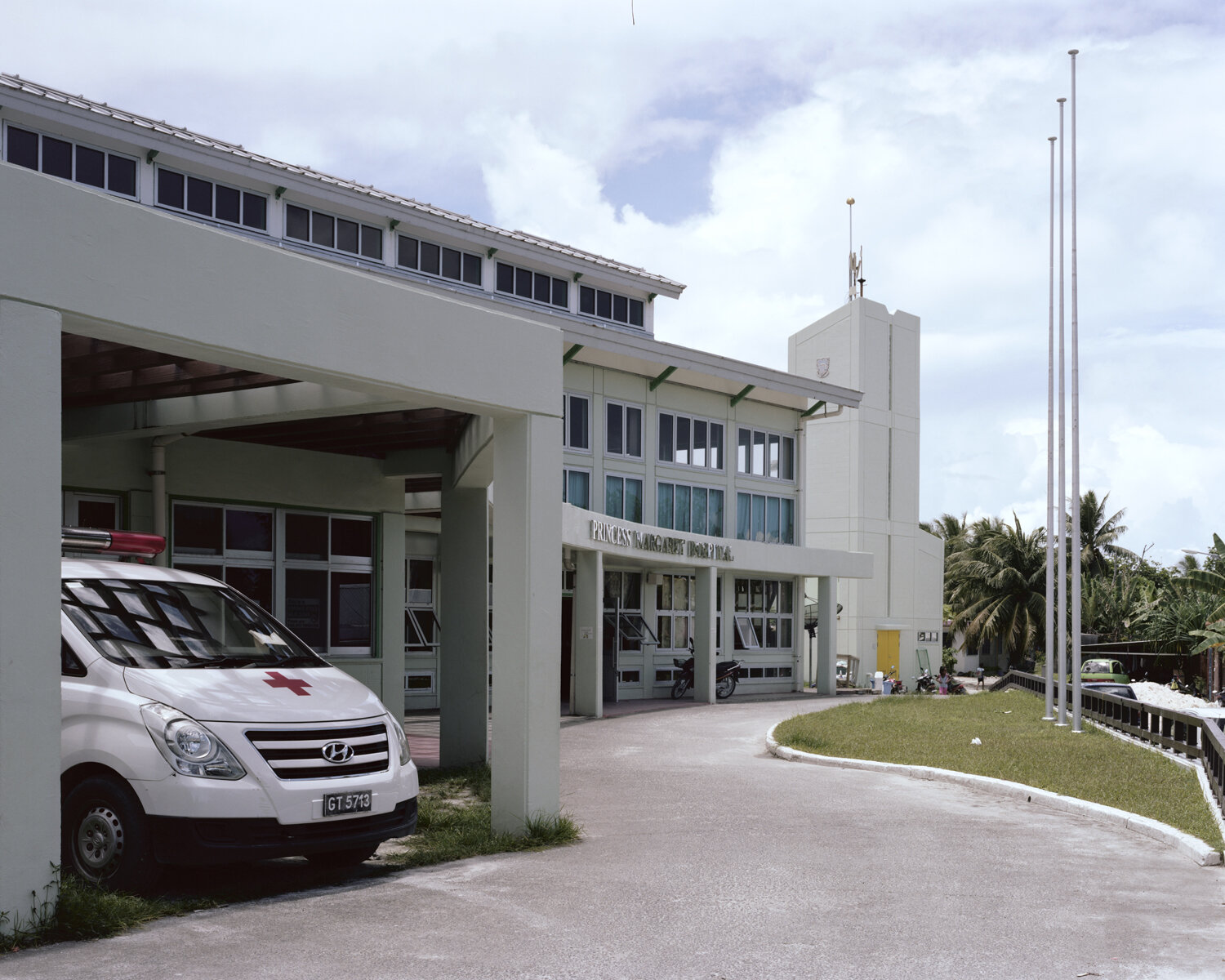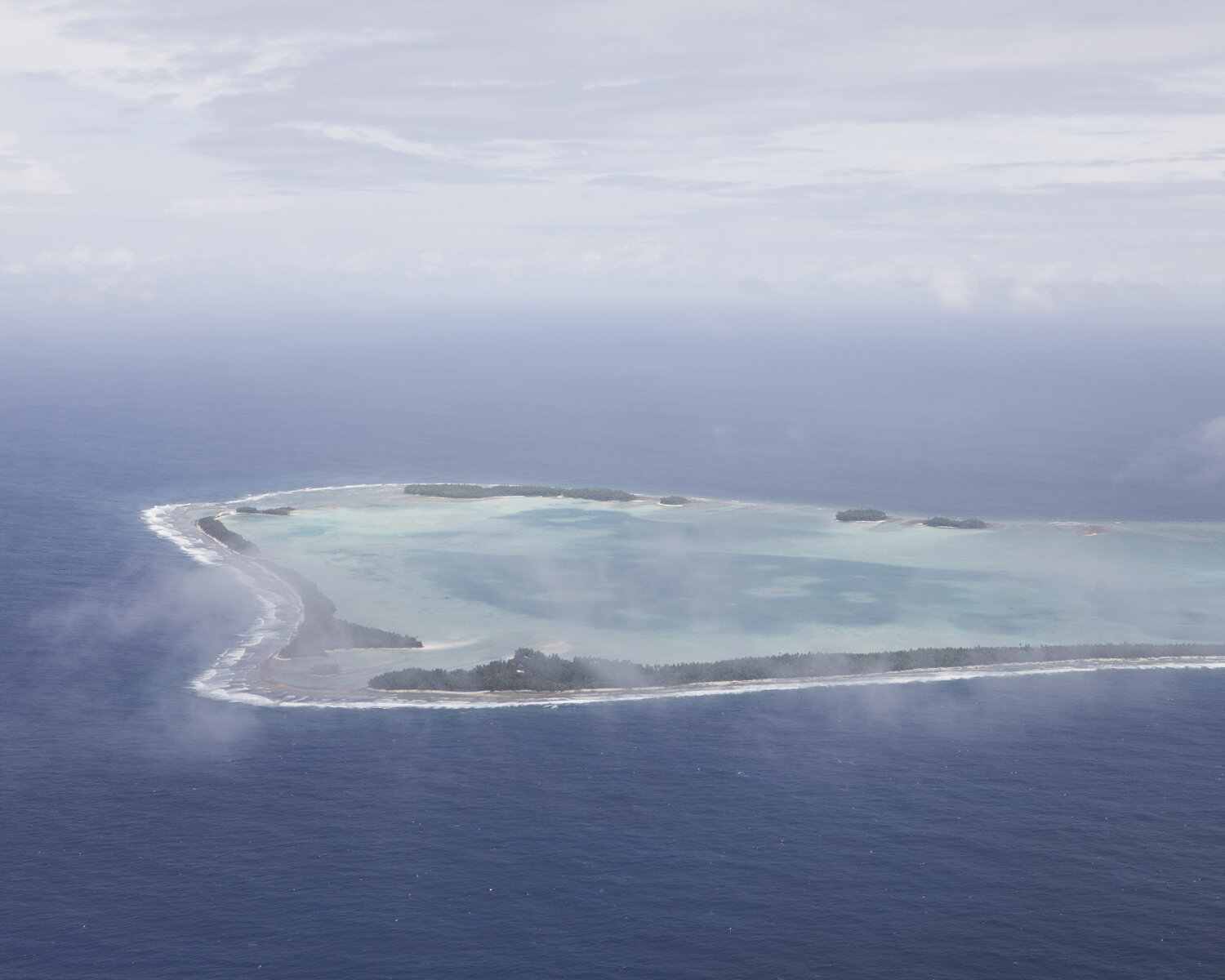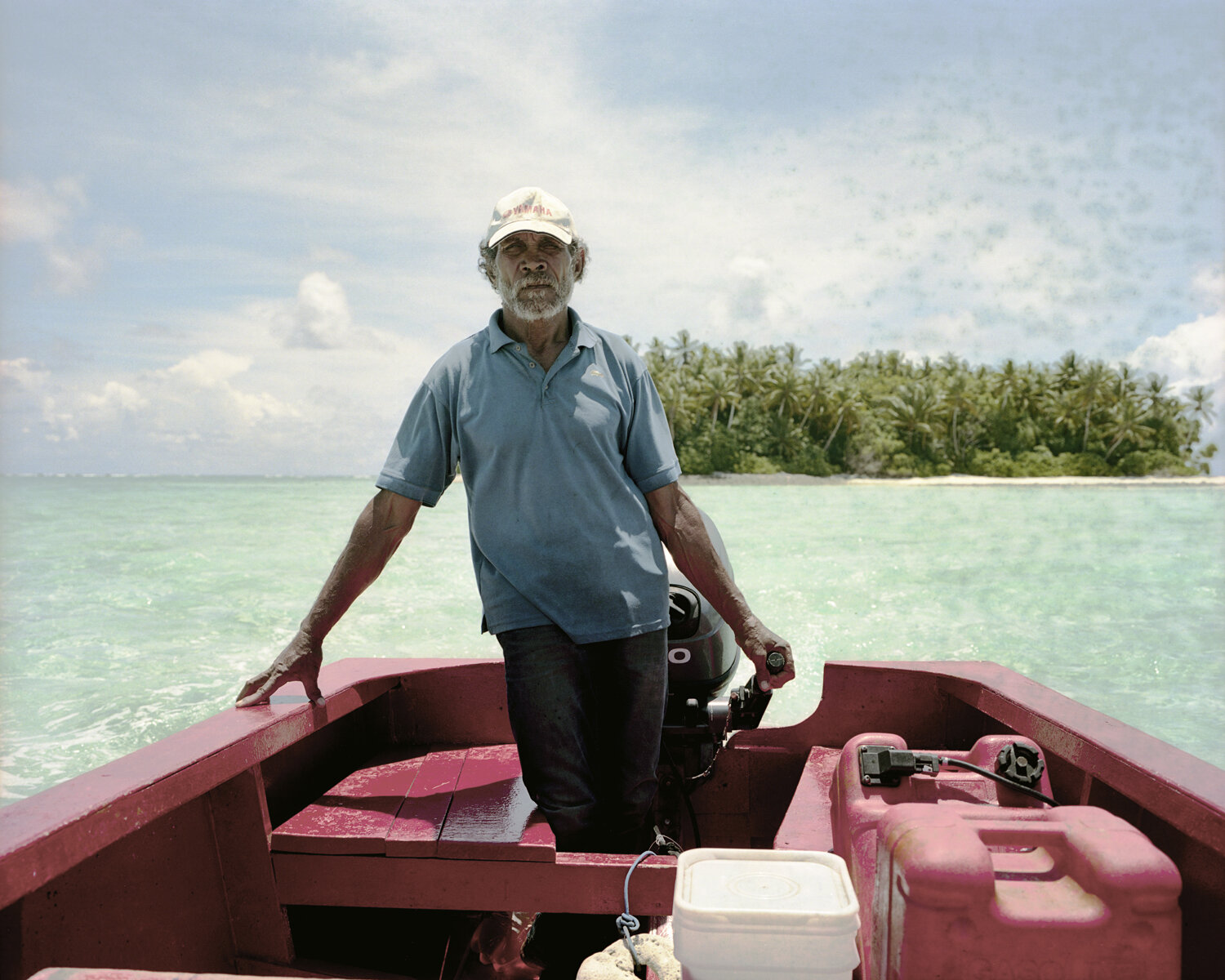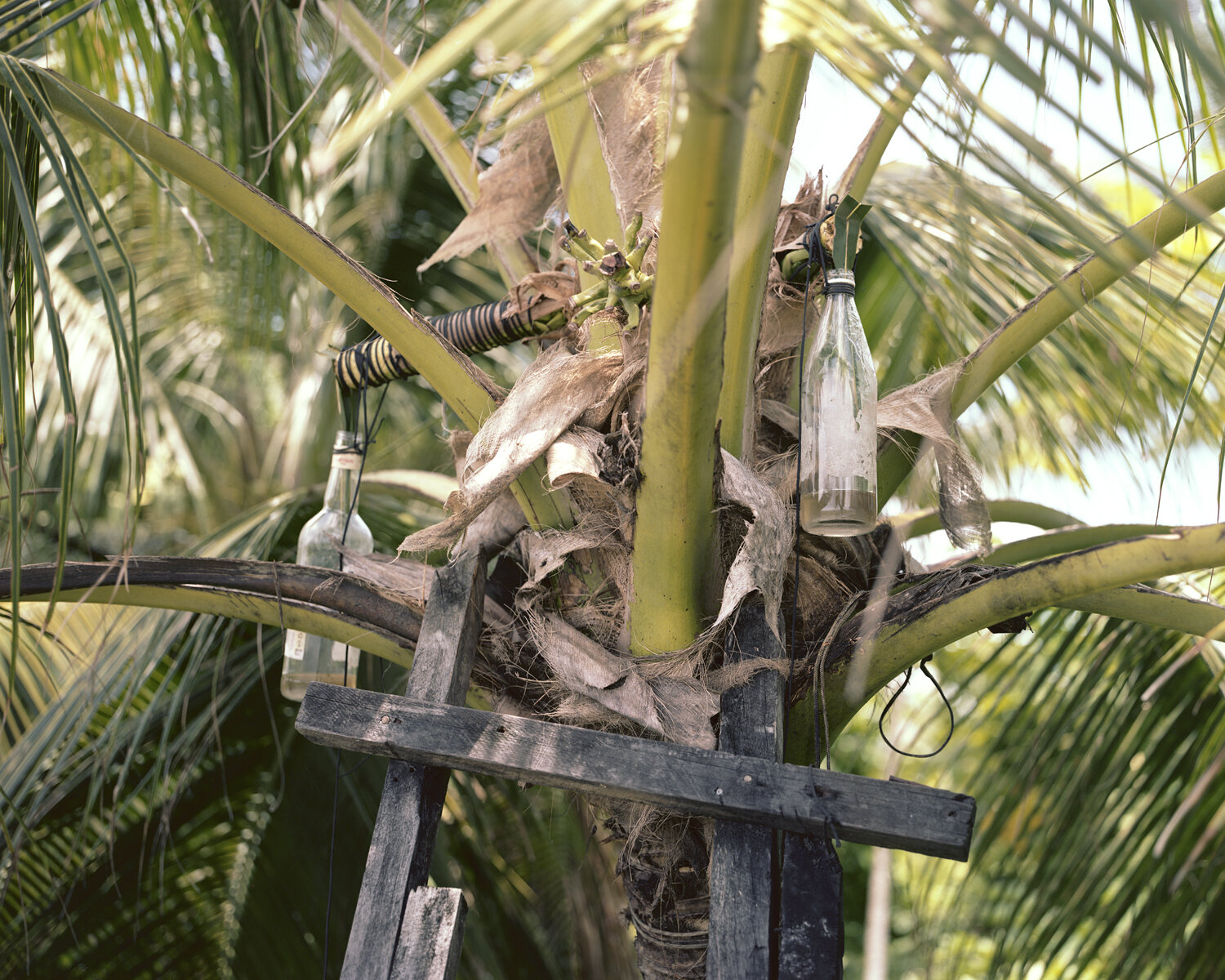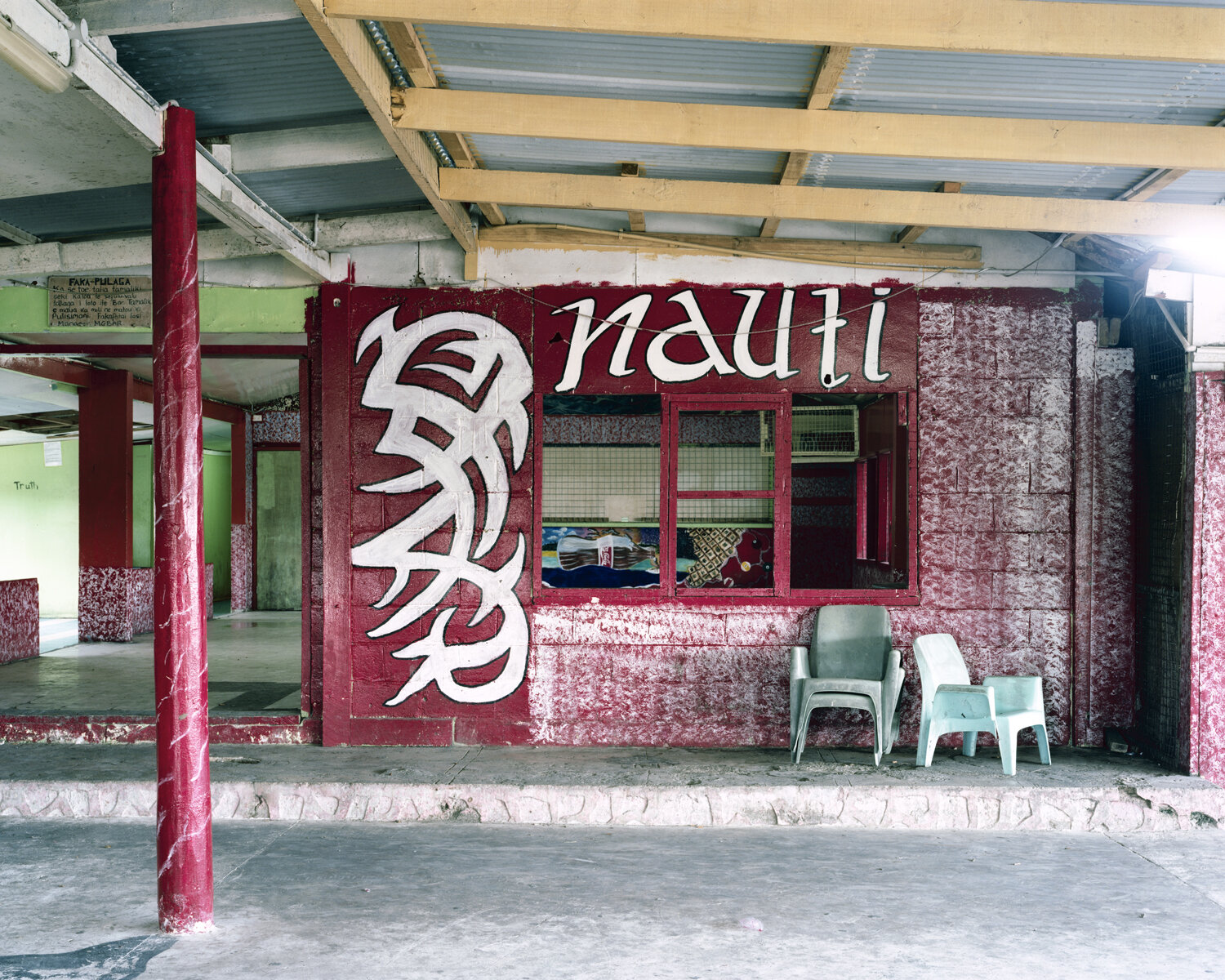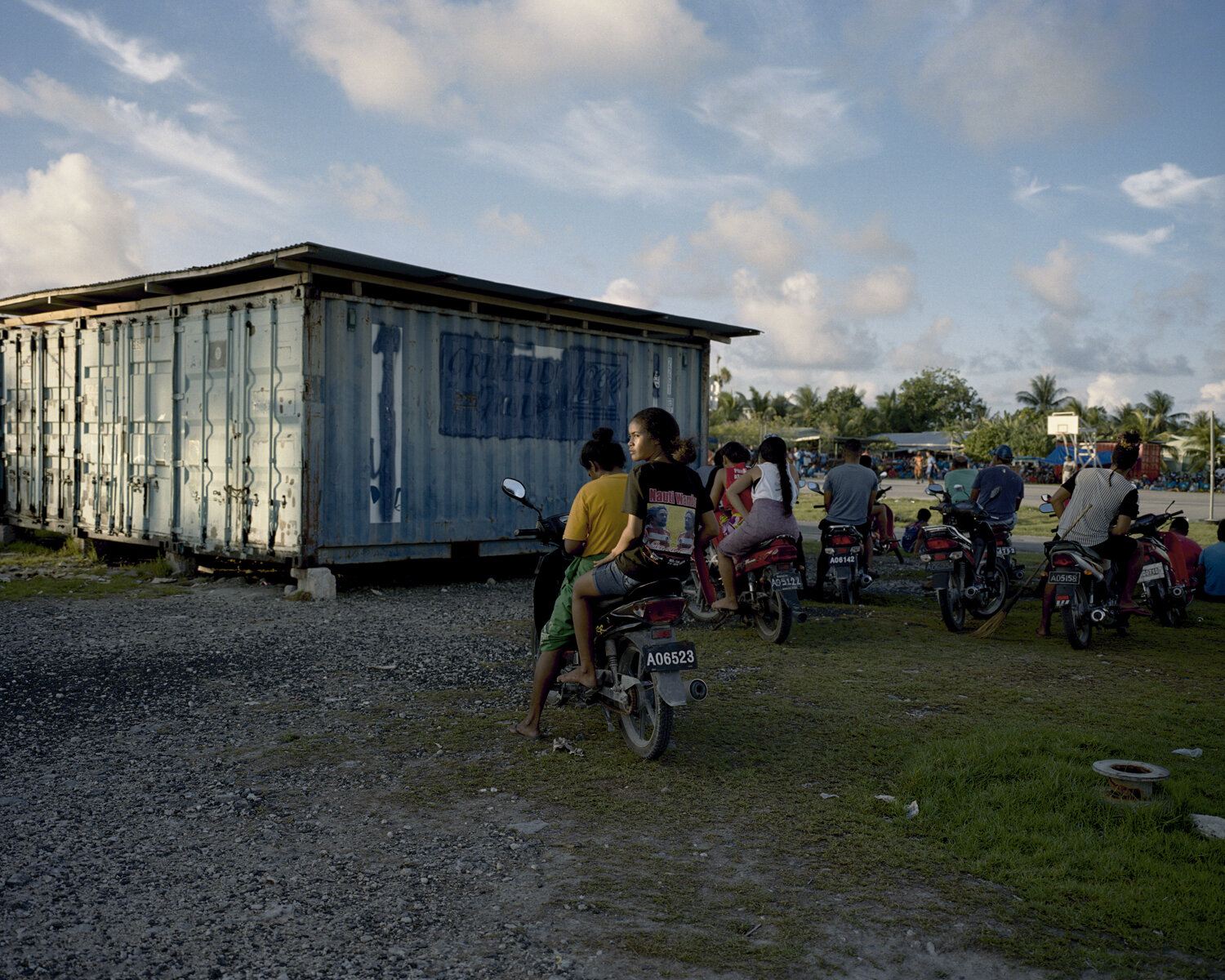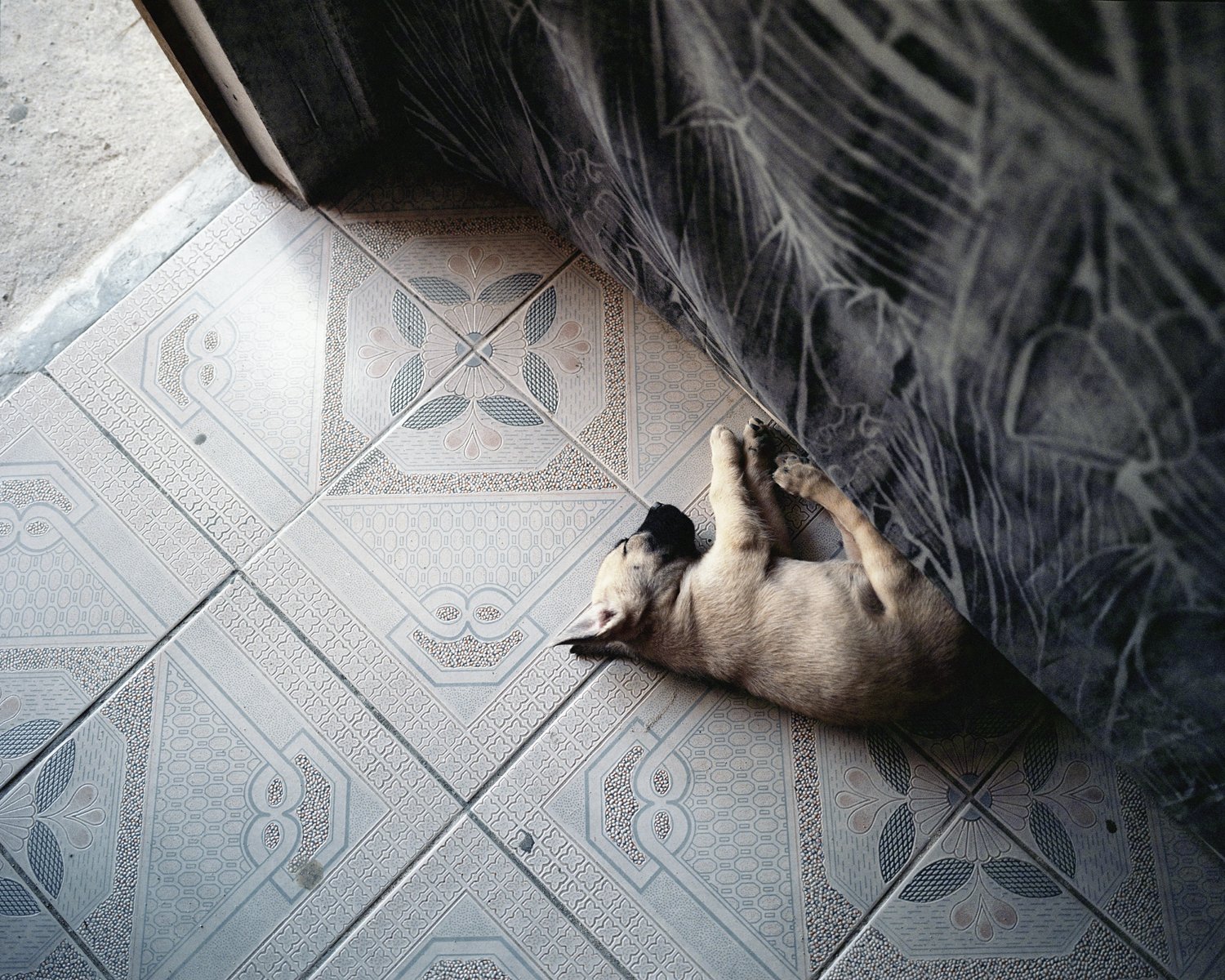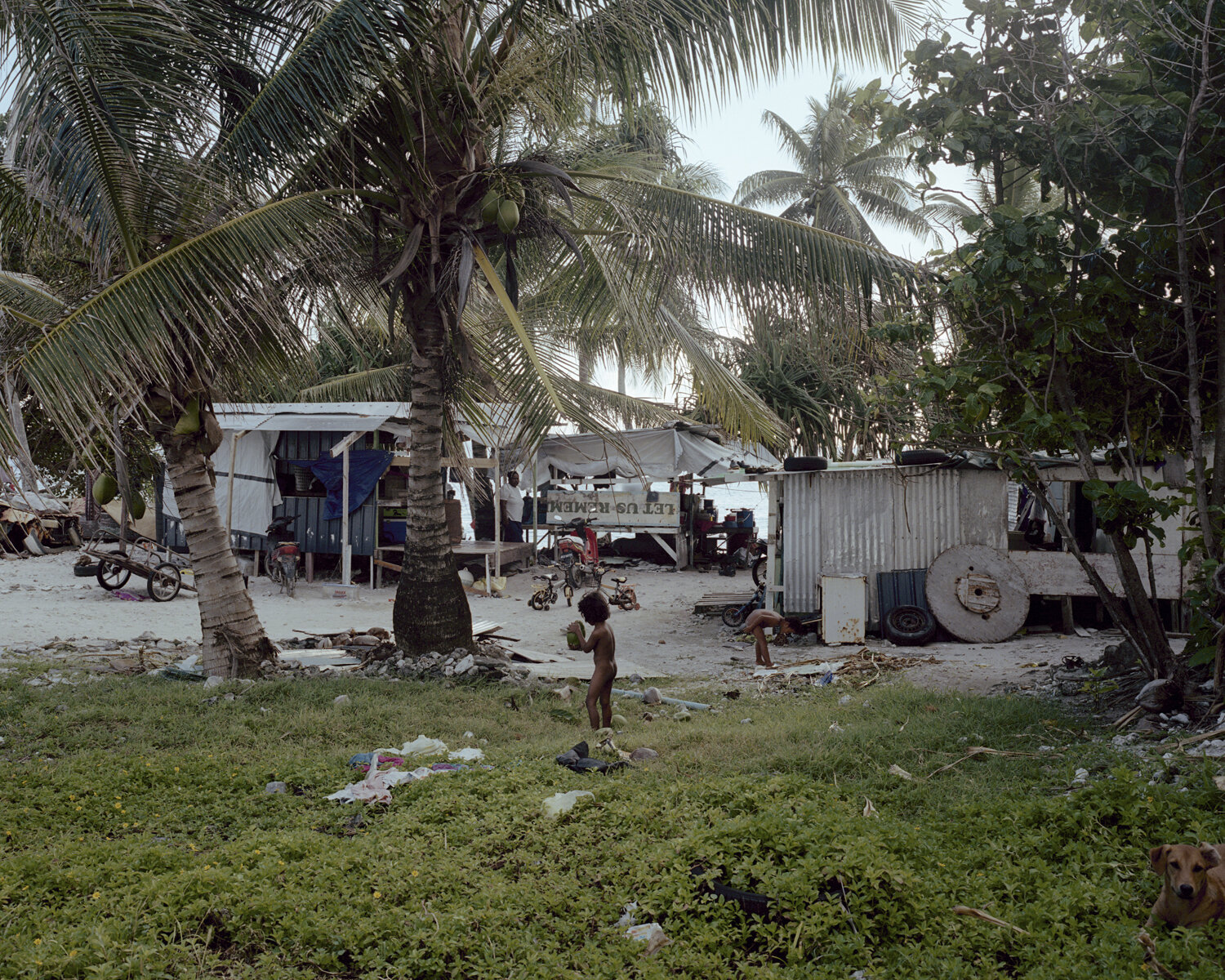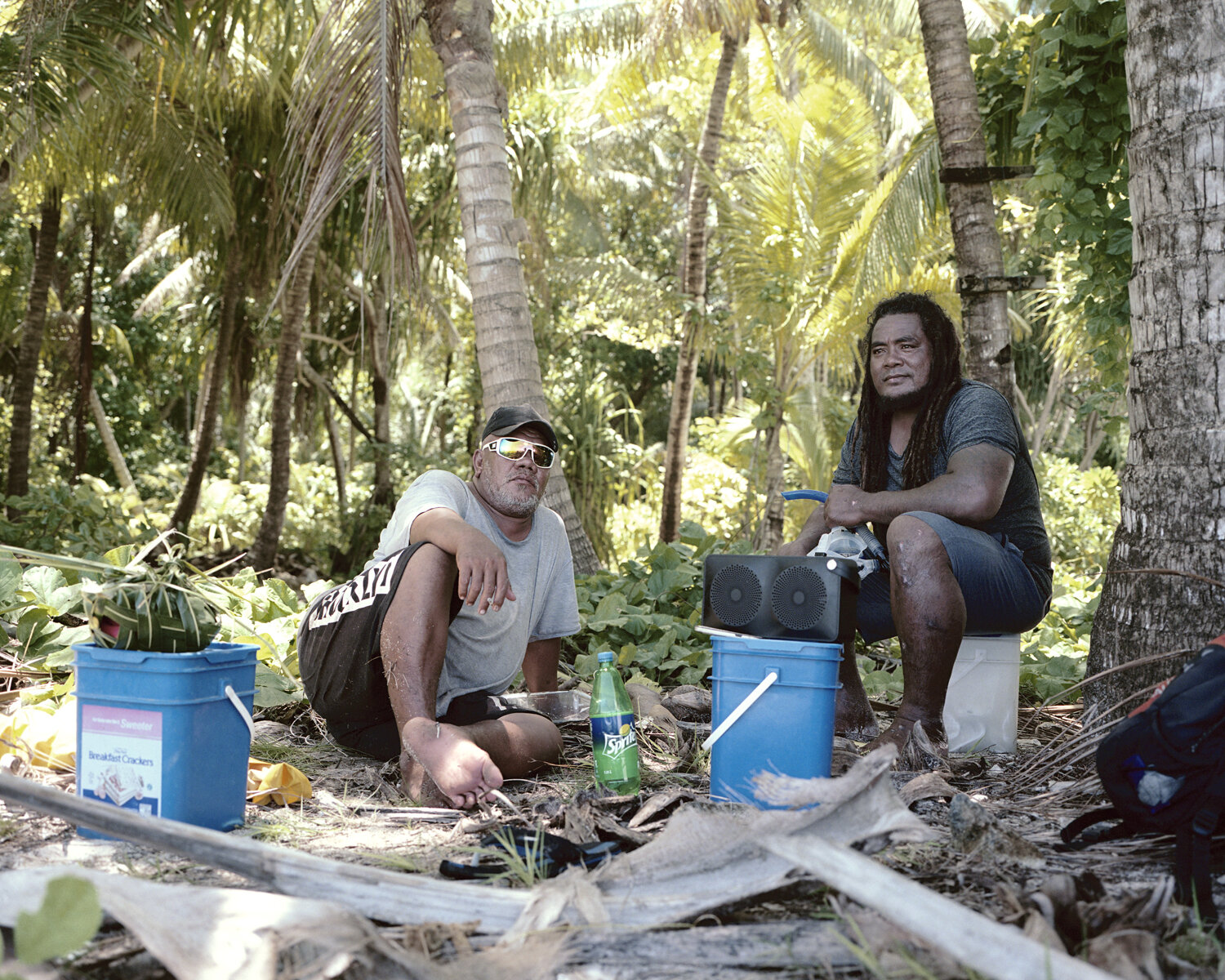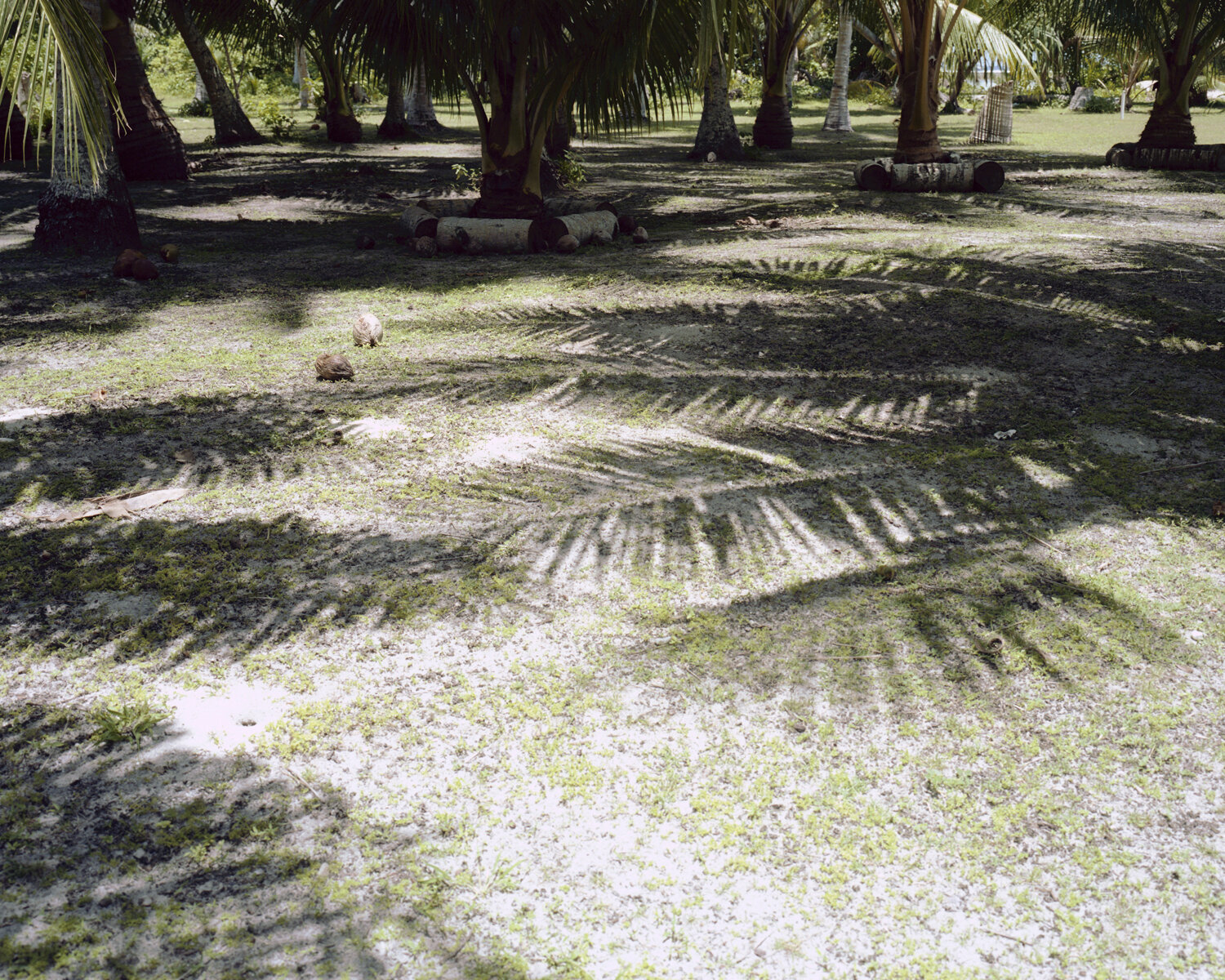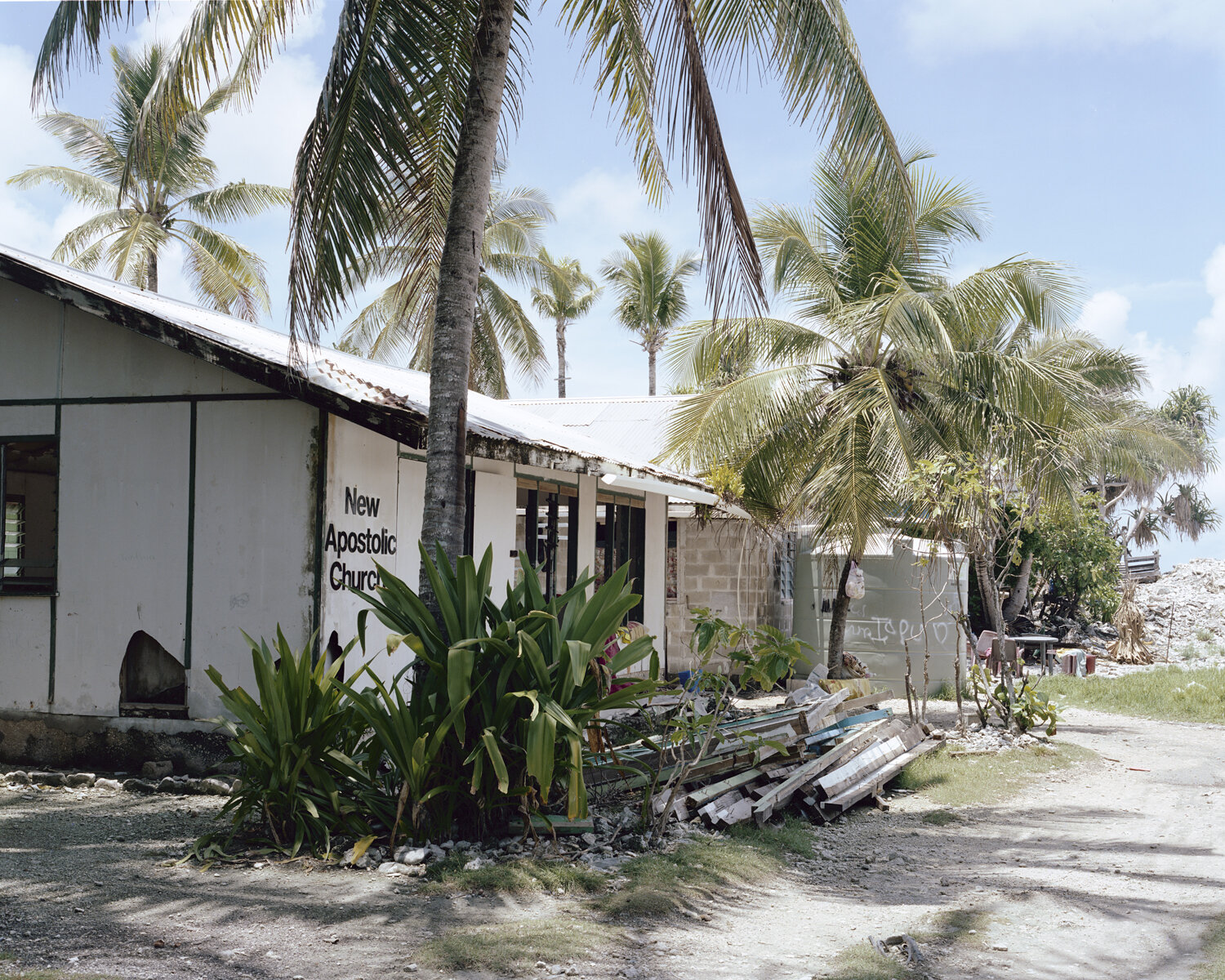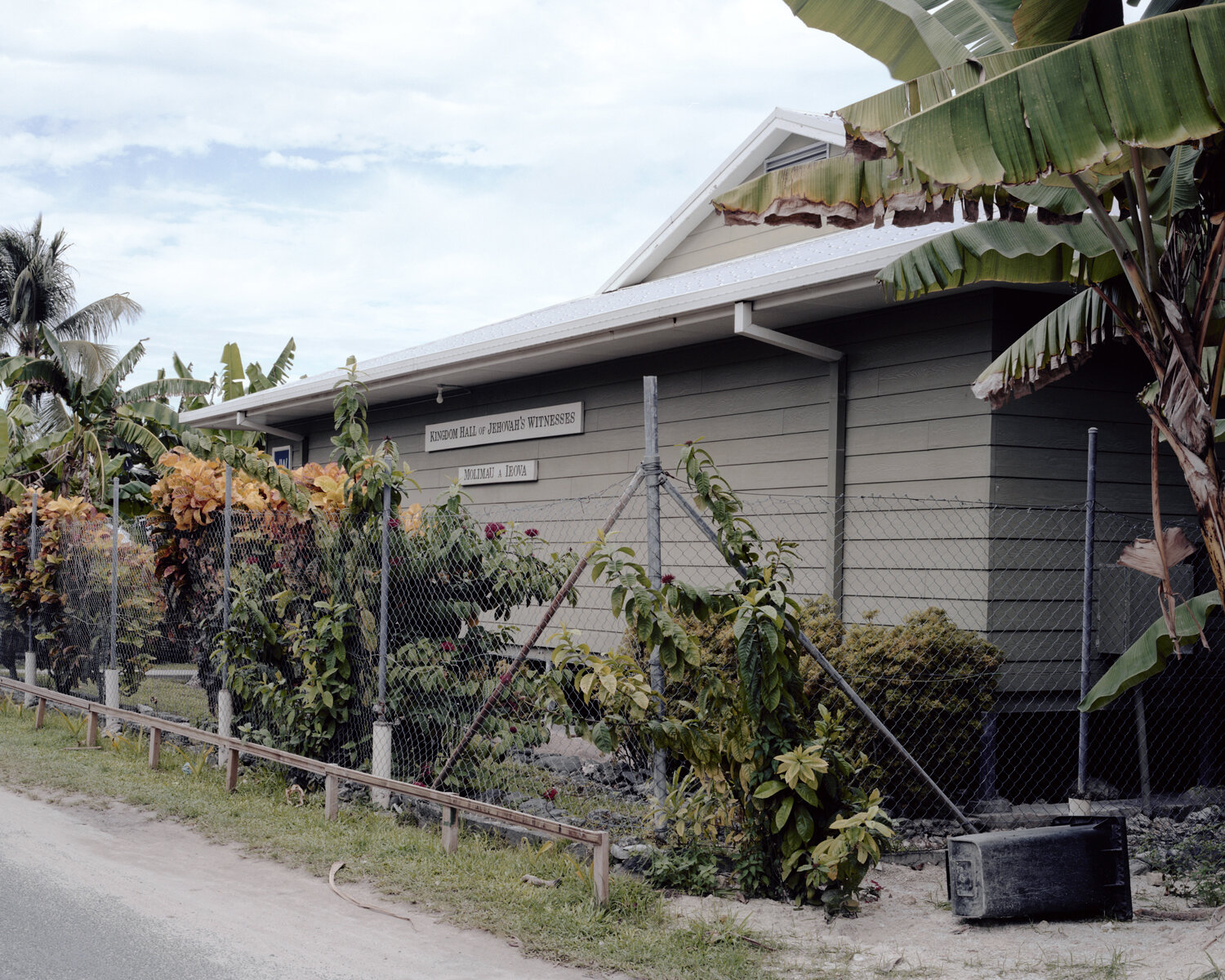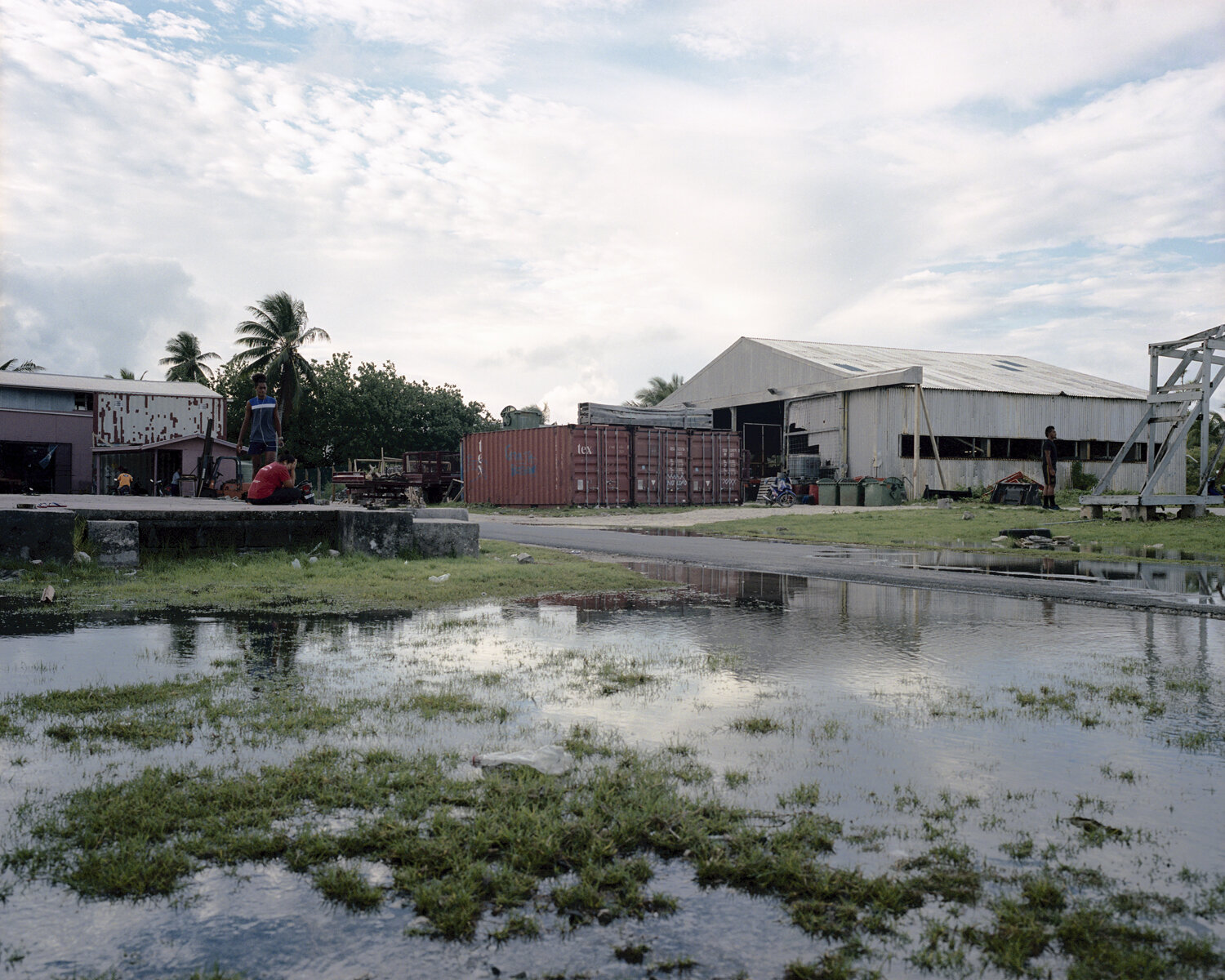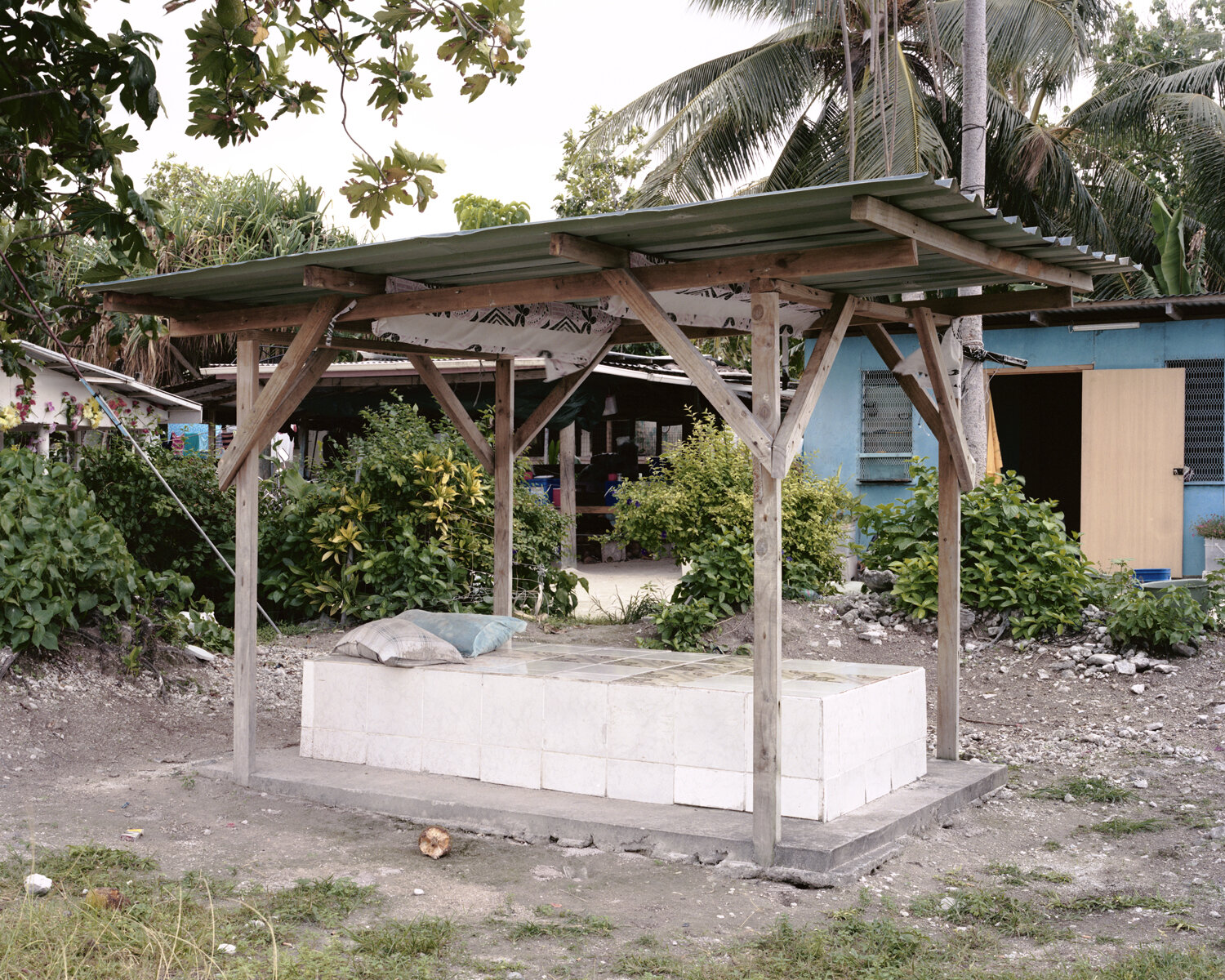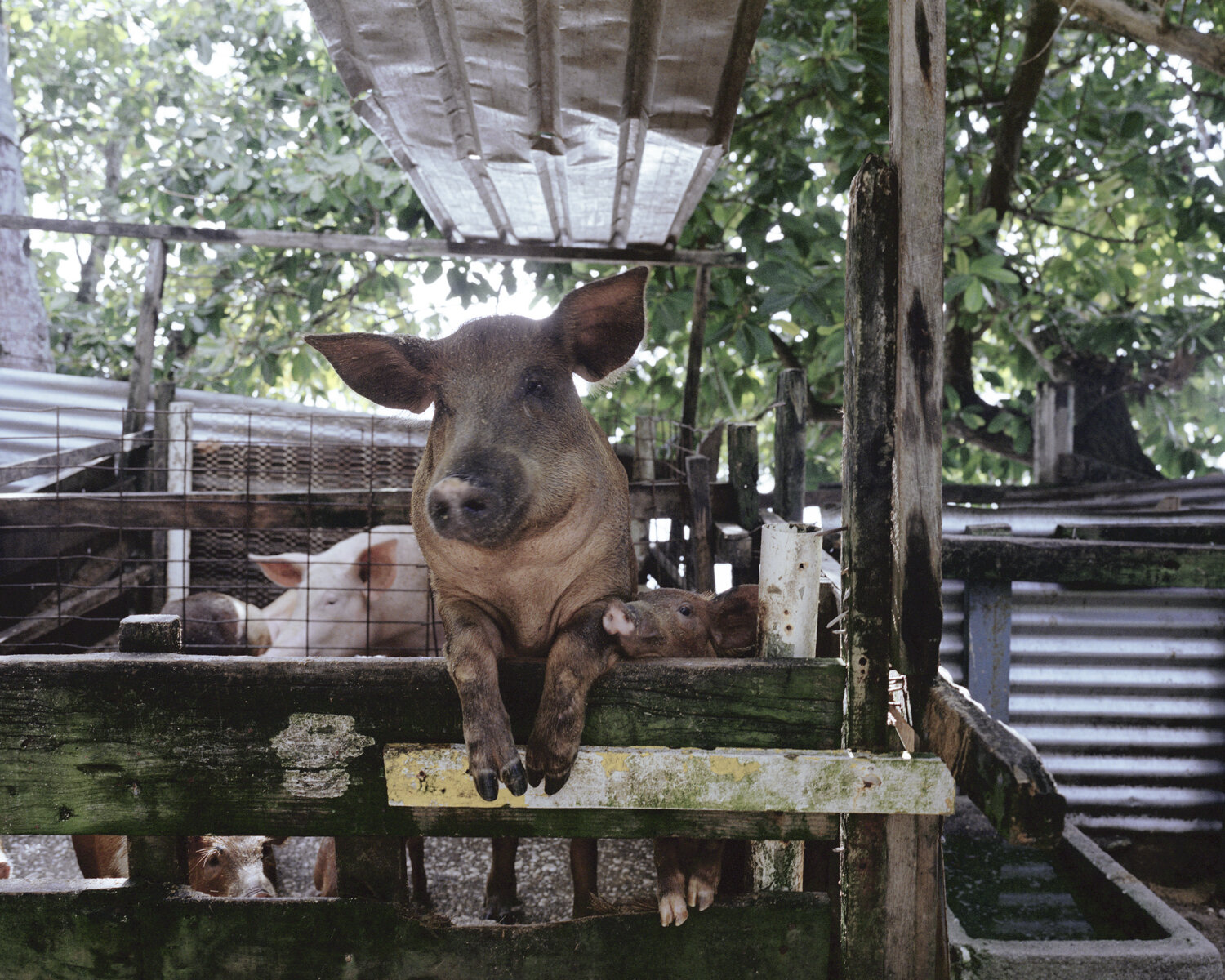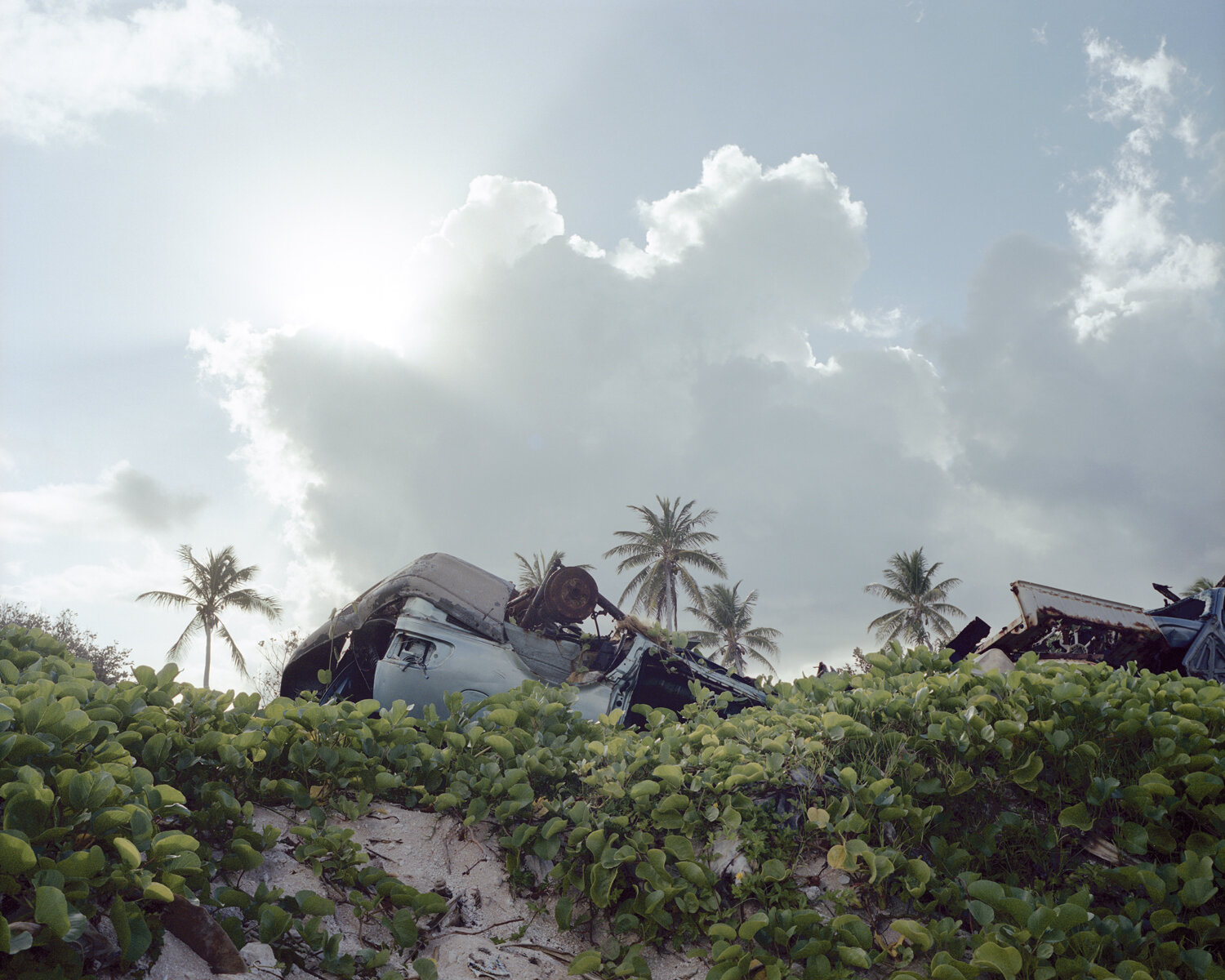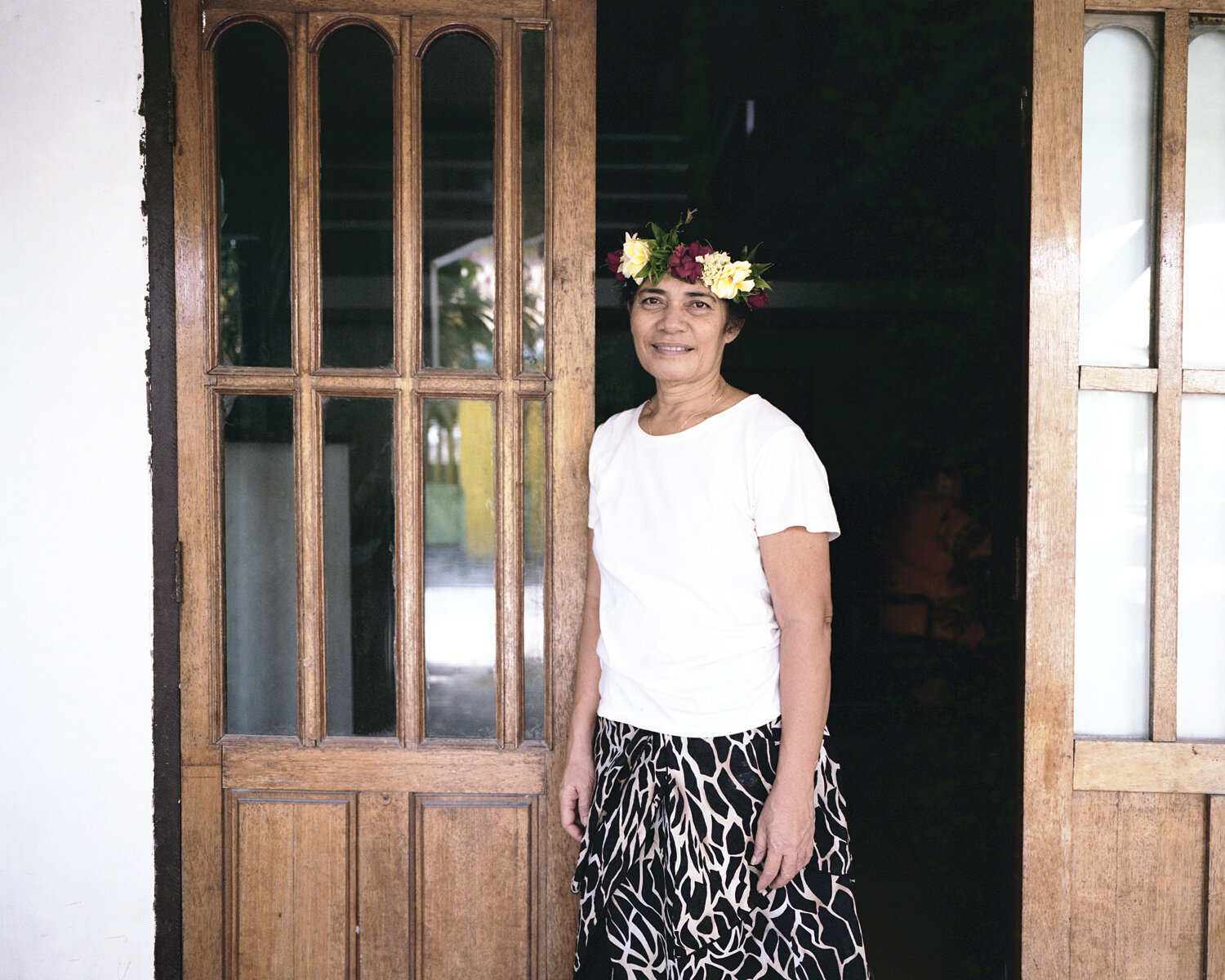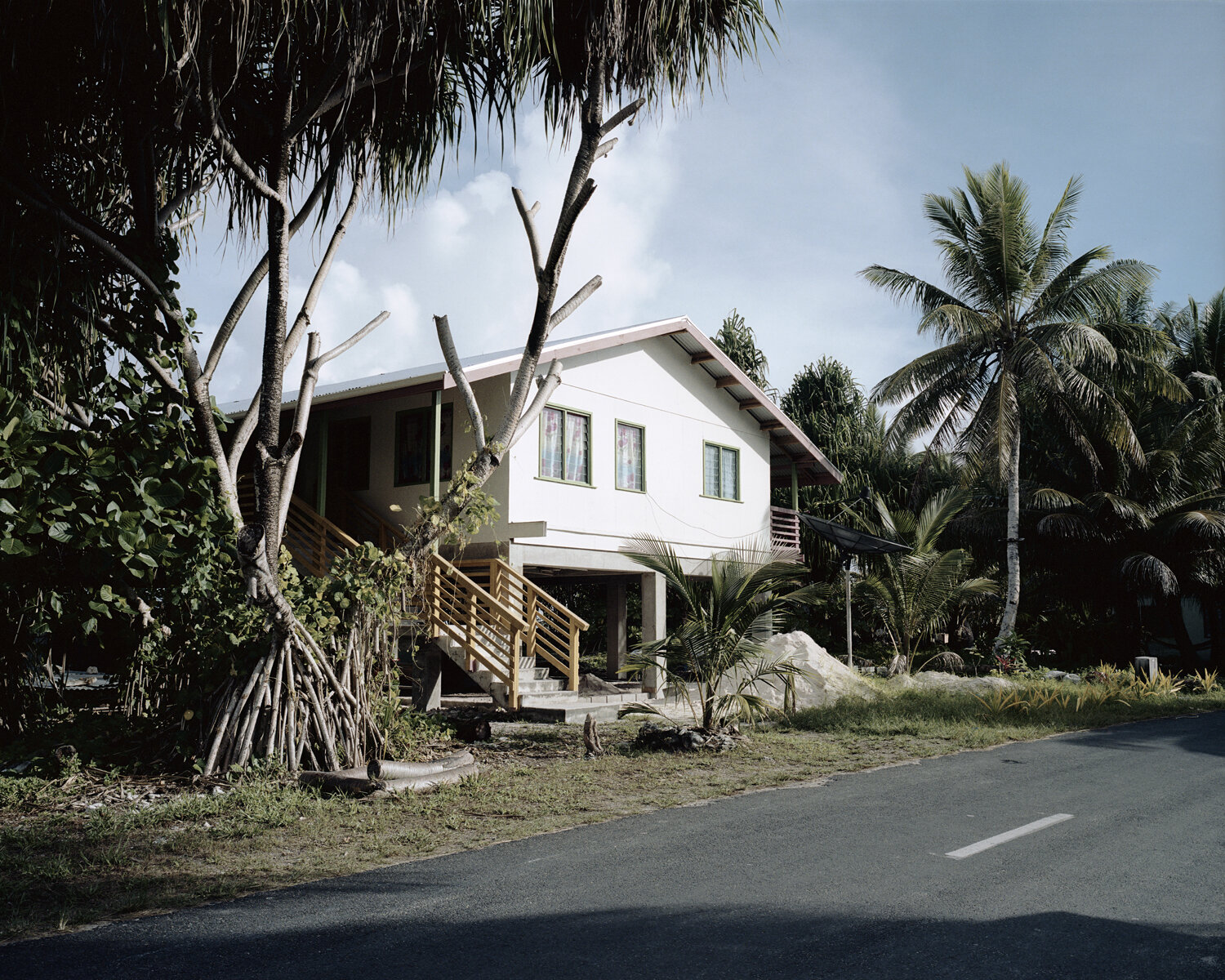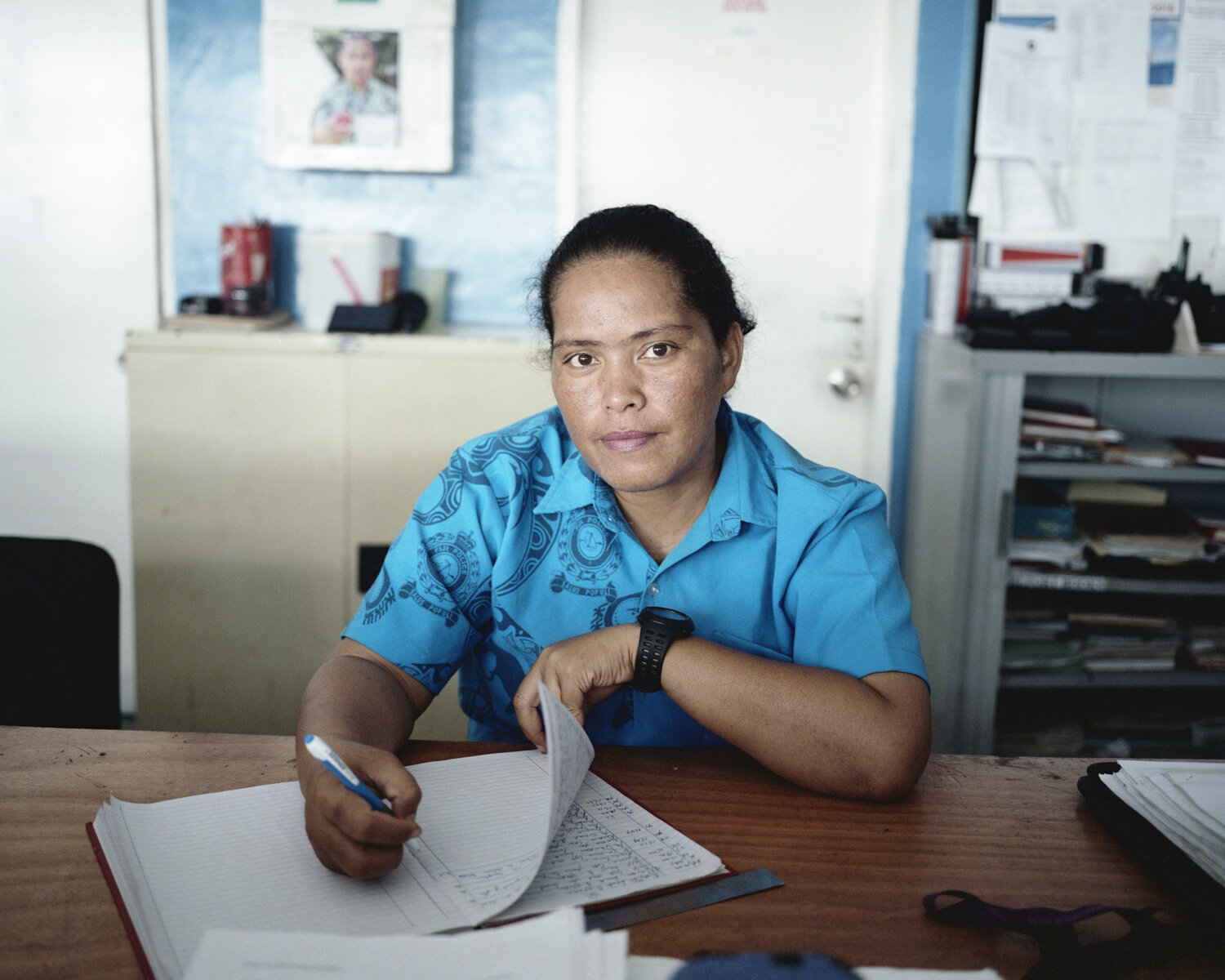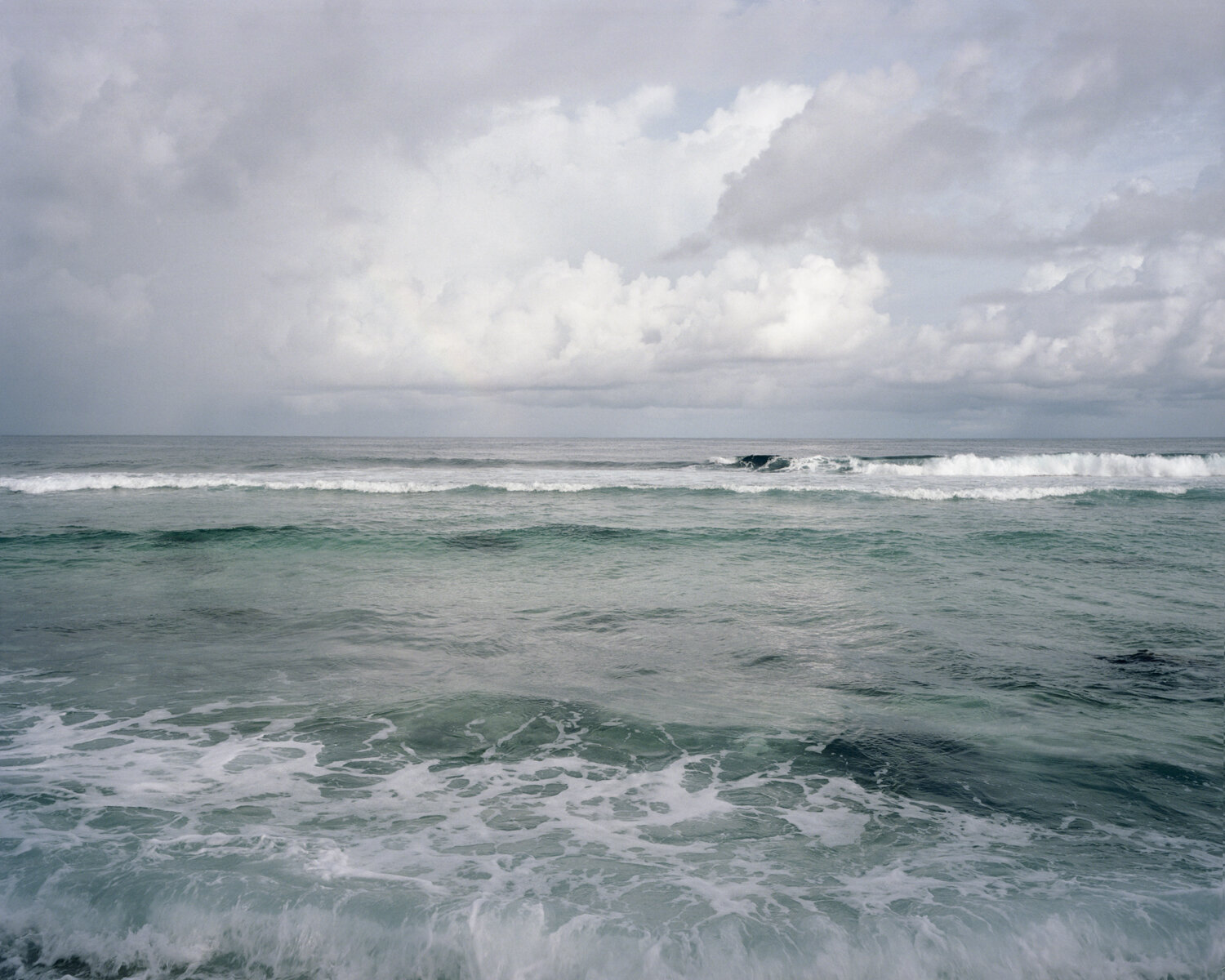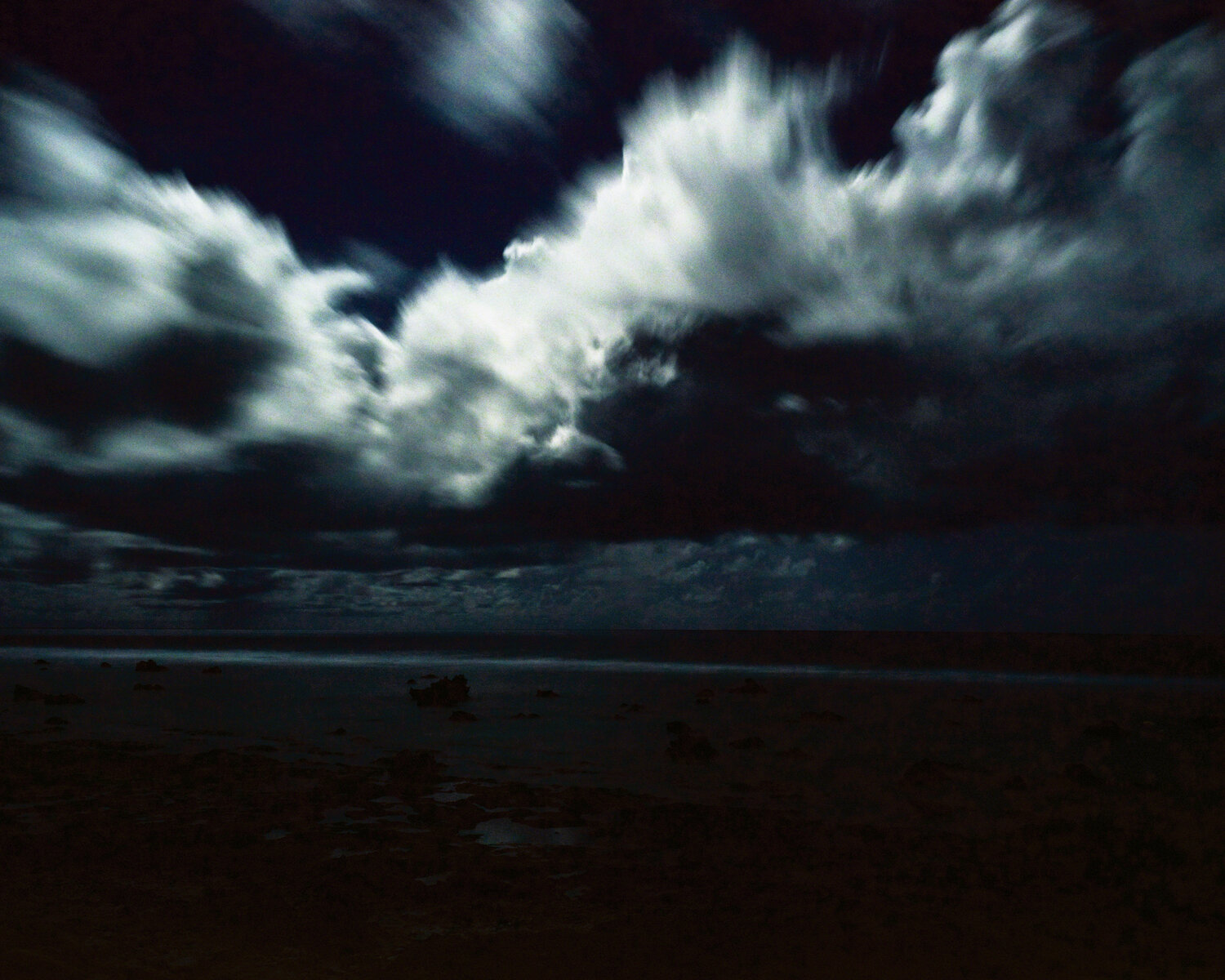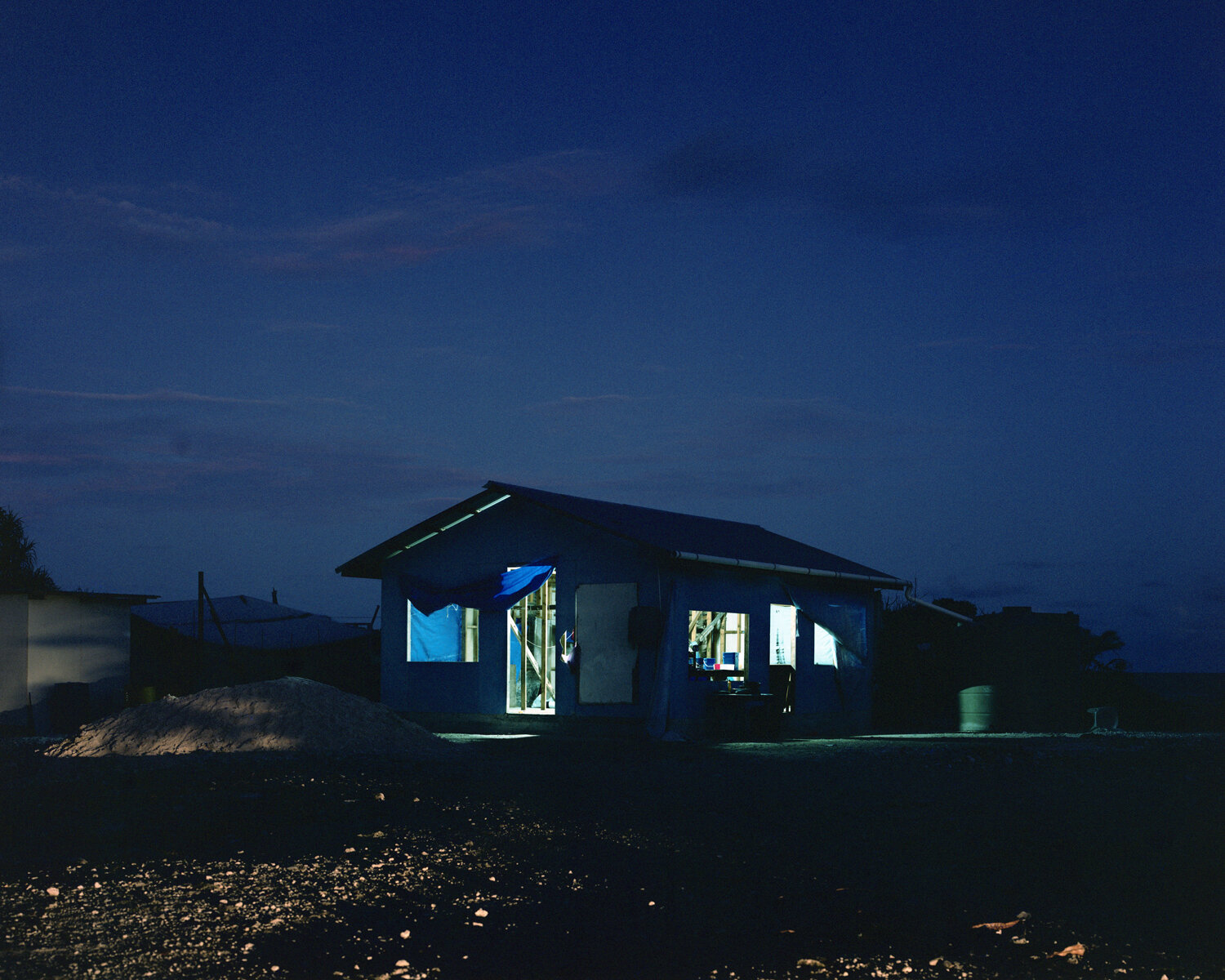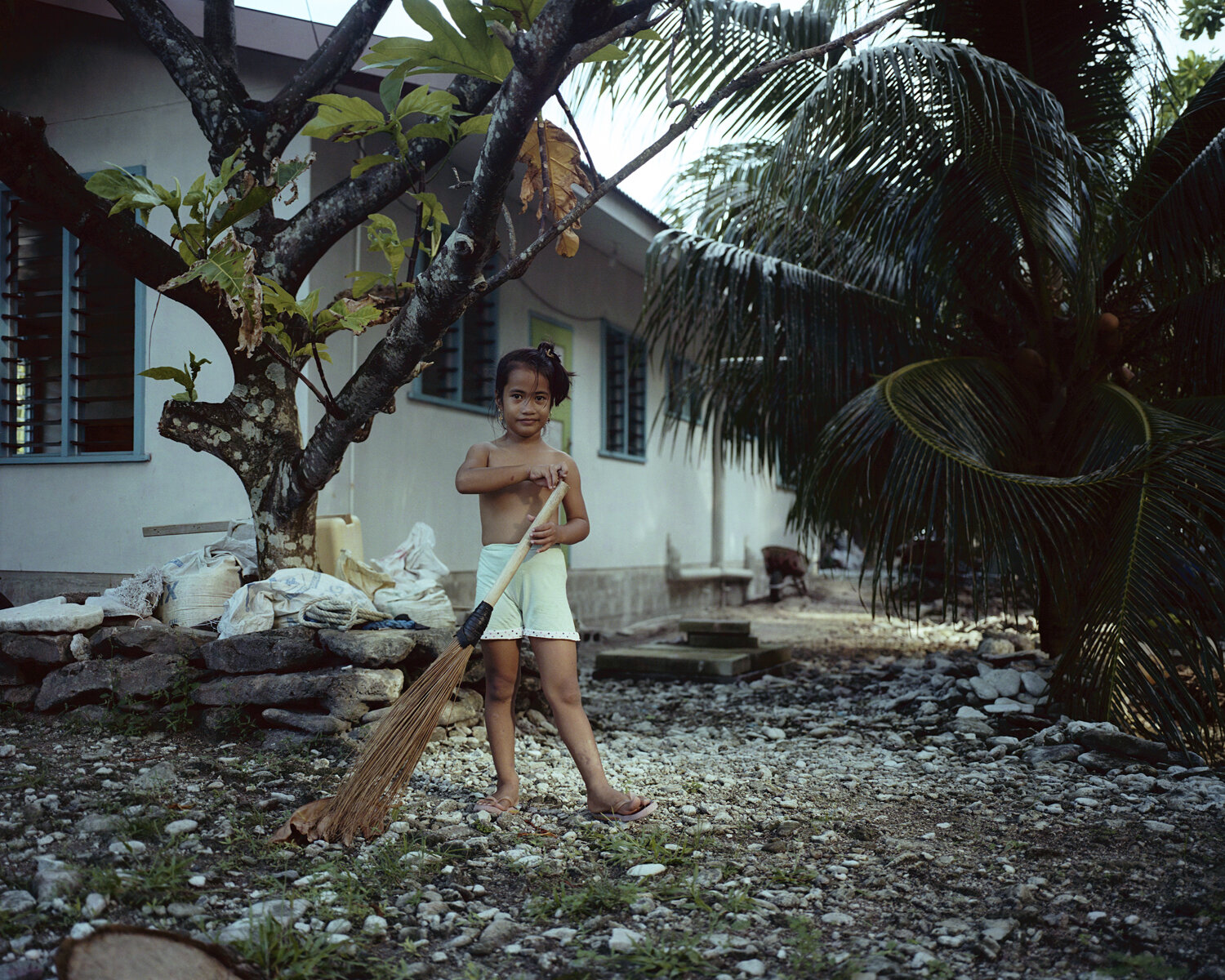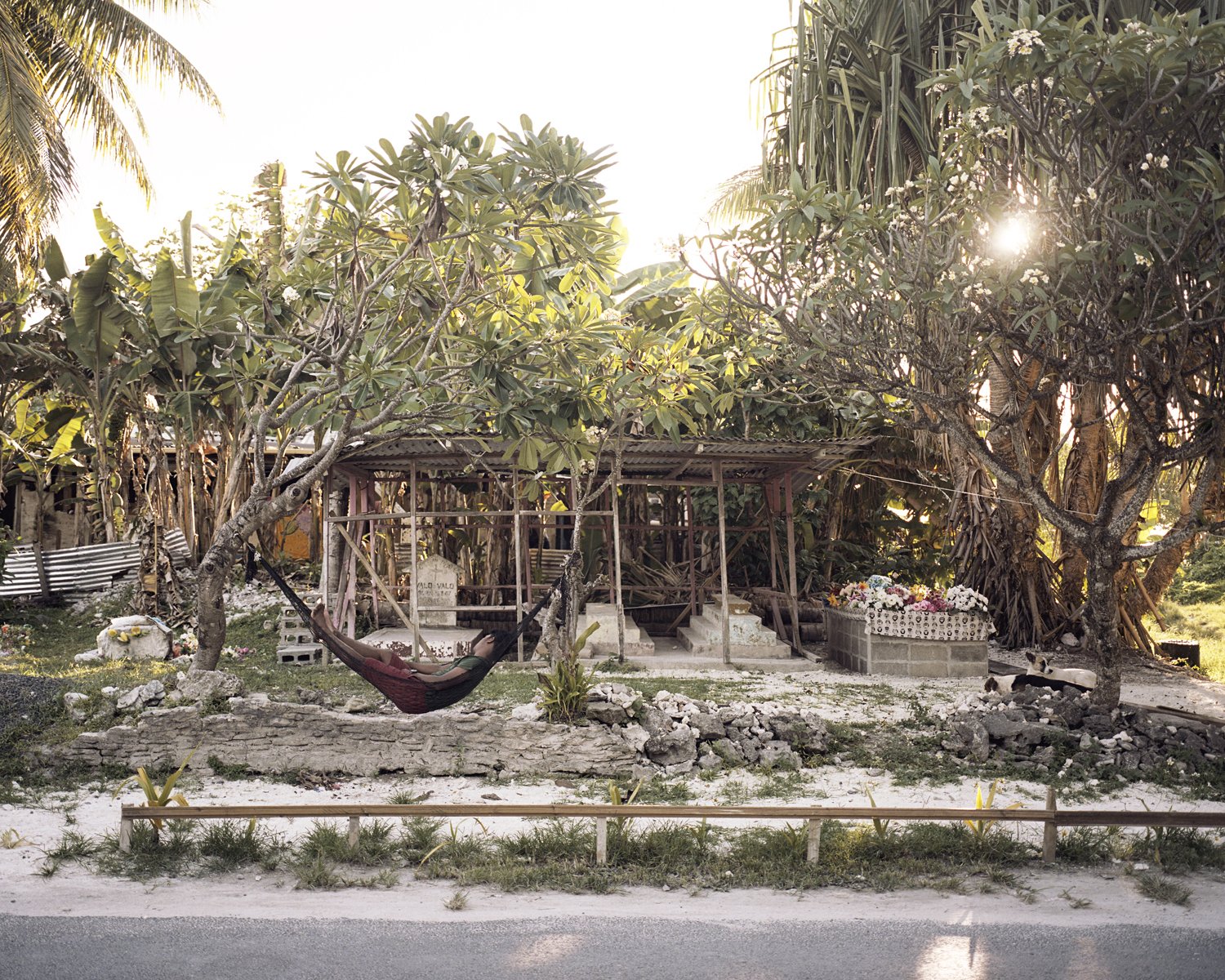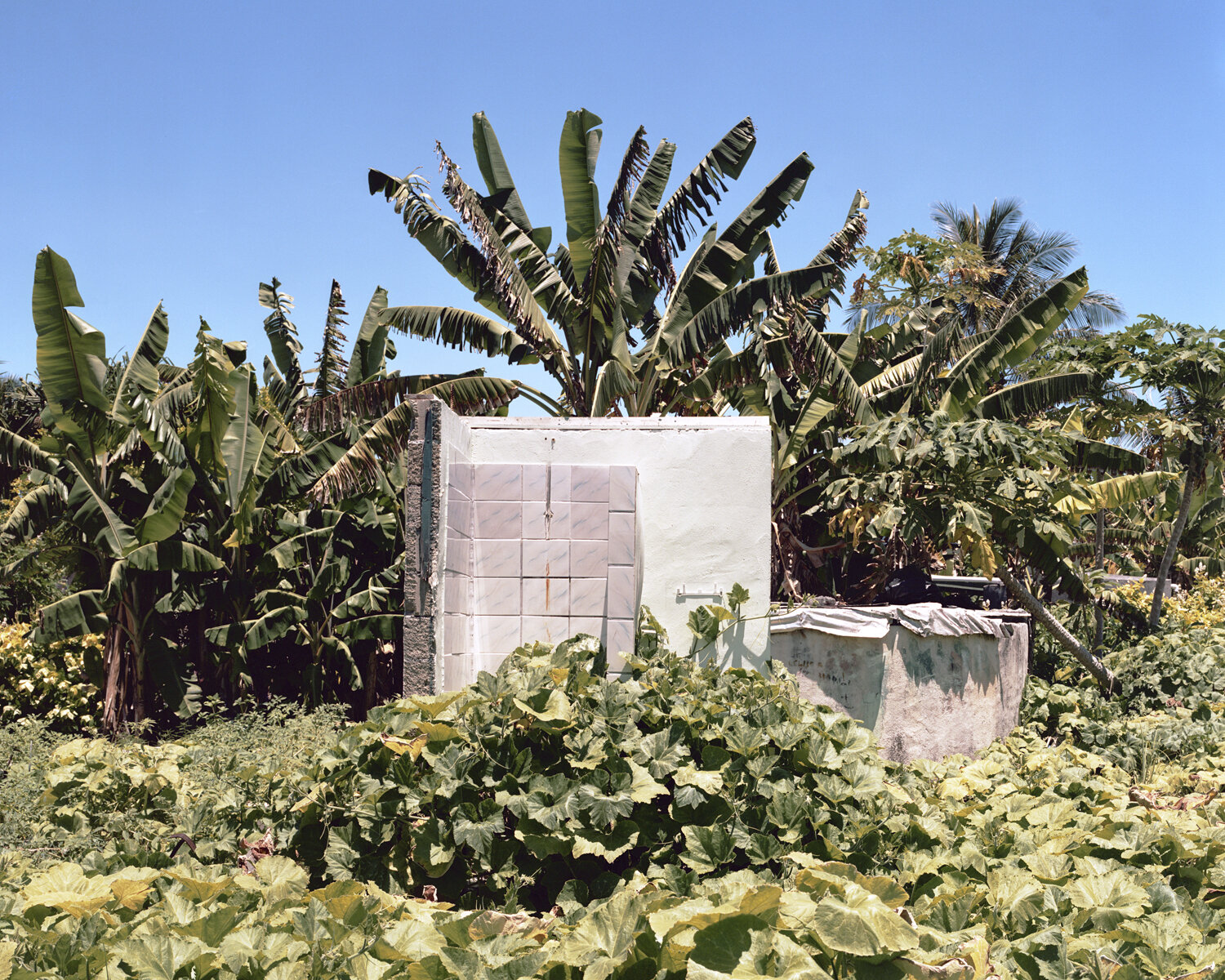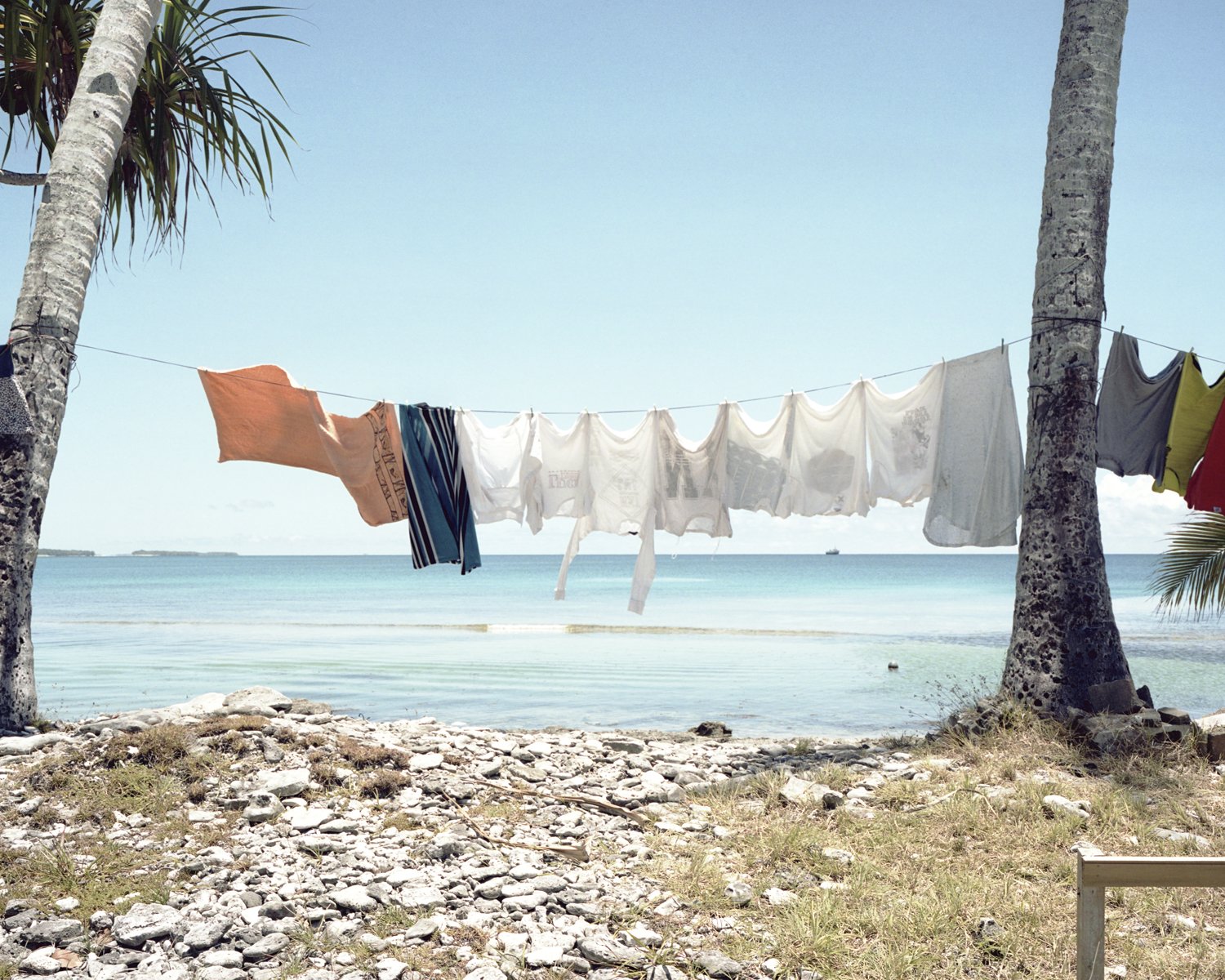[English below]
Pourquoi la notoriété naissante de Tuvalu, archipel au cœur du Pacifique ? Il aura fallu qu’un peuple craigne de ne voir sa terre engloutie par la montée du niveau des mers et océans, pour que nous lui portions attention. Célébrité timide et funeste.
C’est l’origine même du projet photographique : l’extraordinaire vulnérabilité d’un lieu, d’une culture traditionnelle et ancestrale. La structure de l’atoll, récif de corail et sable fin accumulé, symbolise cette fragilité. On songe alors à s’interroger sur le devenir d’un Etat que l’on prédit bientôt dépossédé de ses terres, sur la possibilité qu’une culture survive en dehors du contexte spatio-temporel qui lui a donné naissance.
A l’approche de Funafuti, un des neuf atolls constituant l’Etat de Tuvalu (qui a fêté en 2018 les quarante ans de son indépendance) des pensées inattendues s’invitent ; on songe à ces peuples de navigateurs qui, il y a de cela trois millénaires, ont traversé cet océan immense et hostile. A mesure que l’avion s’approche, le temps se dilate, et l’extrême petitesse de l’île émeut. On comprend alors que la vie dans laquelle on a choisi de se fondre là-bas aura tout d’inconnu. Le projet prend une tournure nouvelle. Contre toute attente, ce n’est pas le sombre horizon d’une éventuelle disparition de Tuvalu qui inquiète, mais la présence humaine en de telles contrées qui surprend. L’émergence d’une culture où on ne l’attend pas. Comment la voir ? La dépeindre, la comprendre ?
Il faudra d’abord tenter de rompre avec ses propres repères, sillonner Funafuti, cette île faite tout en longueur (douze kilomètres de long, entre cinquante et quatre-cents mètres de large), où semblent n’exister plus que deux points cardinaux. Le caractère insolite de la vie à Tuvalu se réaffirme au quotidien, dans les échanges, l’extrême importance accordée à la communauté, la conception du bonheur, le rapport à la propriété, à la famille, à la terre. Pouvons-nous comprendre une autre civilisation et apprendre d’elle? Pouvons-nous sortir de nos représentations ou sommes-nous condamnés à n’y percevoir que ce que nous cherchons ? Comment l’espace-temps influence-t-il une culture ? Pourra-t-elle survivre dans un contexte de mondialisation ? Voilà, parmi d’autres, les questions qui sont apparues peu à peu, et que ce travail photographique évoque sans prétendre y répondre, soucieux de réaliser le portrait d’une civilisation qui s’interroge sur son devenir.
FUNAFUTI I ASO NEI
ed. 7 + 2AP / 40x50cm / 80x100cm
Why this growing public attention to Tuvalu, the archipelago in the middle of the Pacific Ocean? Only when its inhabitants started fearing their territory being swallowed by rising sea levels did the world pay attention. This is a sad claim to fame.
The basis for this photo project is to show the extraordinary vulnerability of a place and of a traditional ancestral culture. The structure of the atoll, a mix of coral reef and fine sand, is the symbol of its weakness. It makes us think of the future of this country that is expected to loose its land, and of the survival of its culture far away from its origins.
Approaching Funafuti, one of the nine atolls that form Tuvalu (which in 2018 celebrated the fortieth anniversary of its independence) unexpected thoughts come to mind. We think of these navigators who three thousand years ago crossed the enormous and dangerous ocean. With the approach of the plane time expands and one is moved by the smallness of the island. We realize that we are going to encounter an unknown world. The project takes a turn. It is no longer about the worry of Tuvalu disappearing, but rather about the human presence in this remote part of the world. A culture where one didn’t expect it and how to understand and describe it.
We first need to give up our reference points and criss-cross Funafuti, this island that is twelve kilometres long and between fifty and four hundred metres wide, its only cardinal points. The Tuvaluans unusual life style is reconfirmed on a daily basis with encounters, with their great community feeling, with their sense of happiness, their notion of property, family, and landownership. Are we able to understand another civilization and learn from it? Can we give up our thoughts or are we expected to only see what we are looking for? How do space and time influence a culture? Can it survive with globalisation? Those were the questions that came up one after the other and that this photo series tries to show without pretending to answer them. It seeks to show a culture that is worried about its future.
A LIRE / TO READ :

